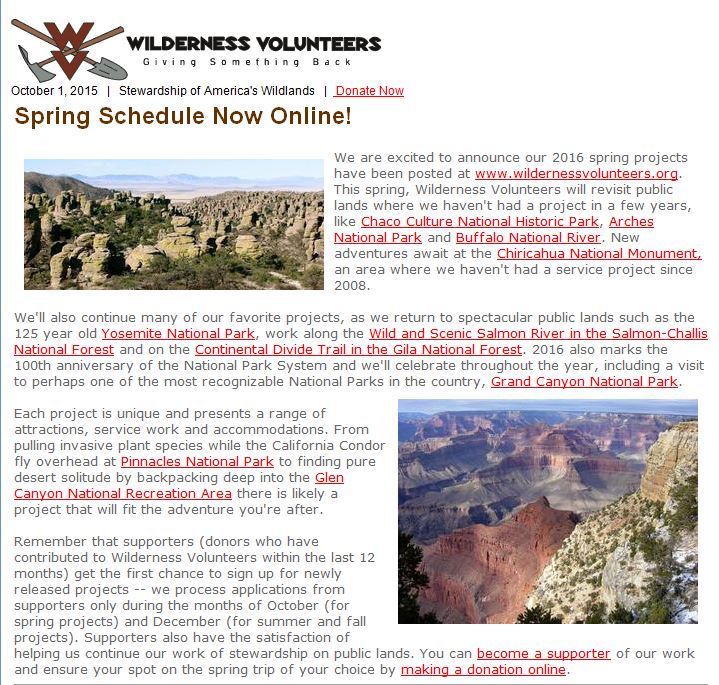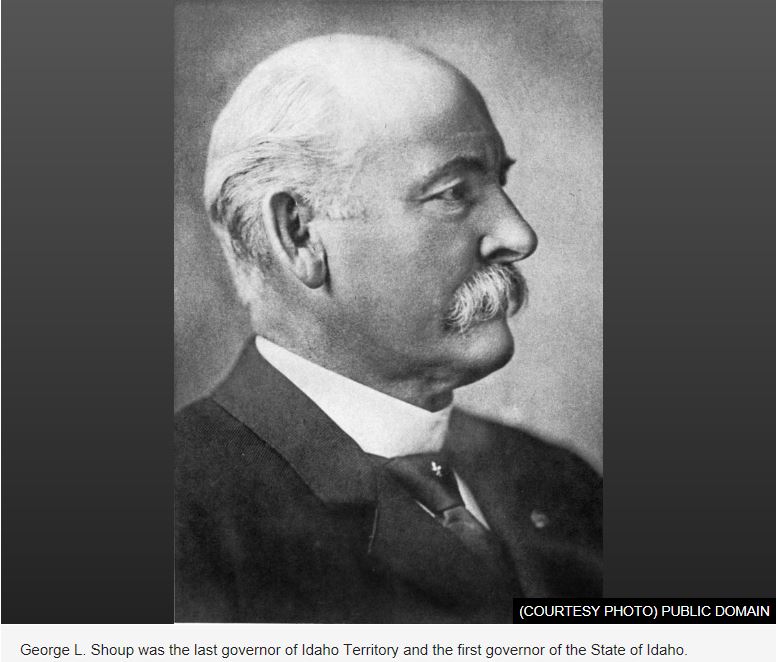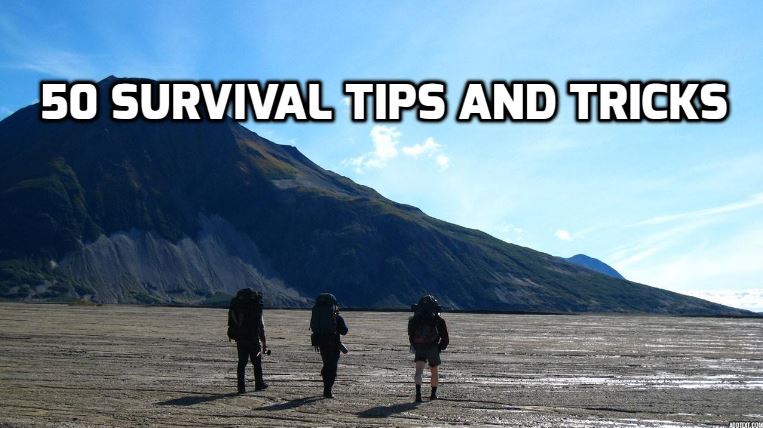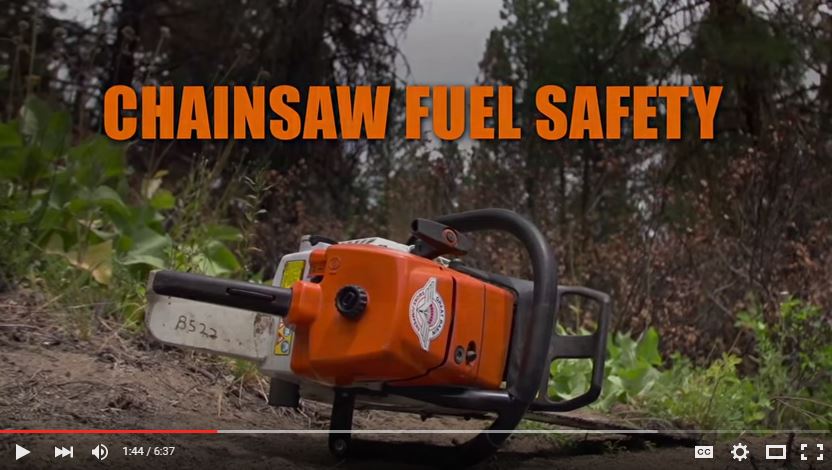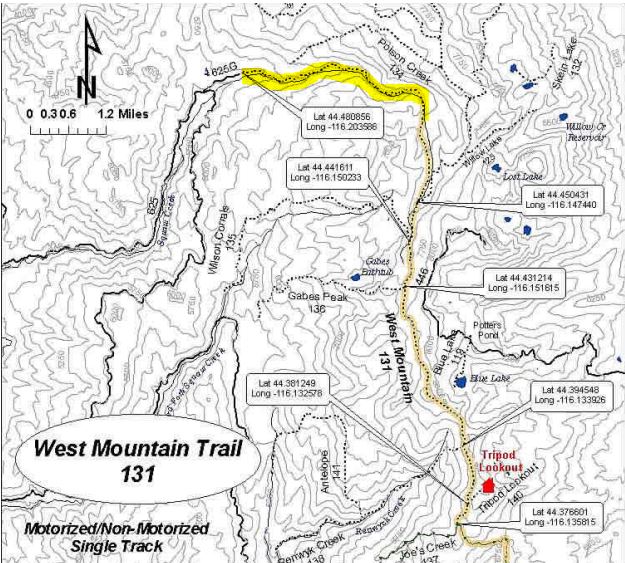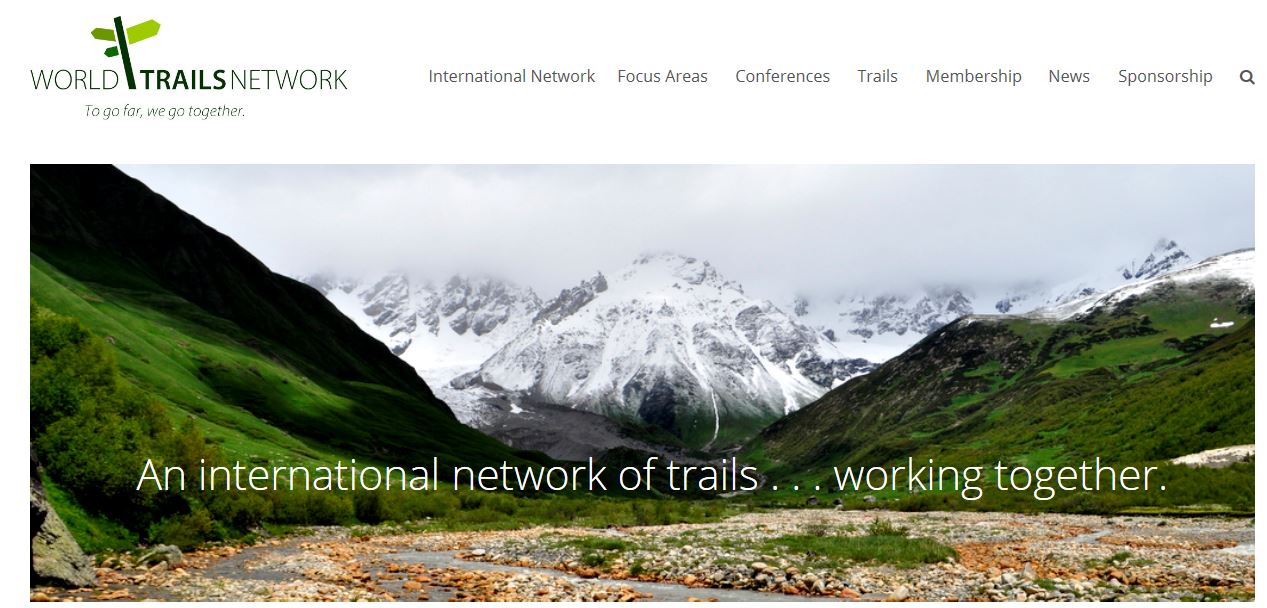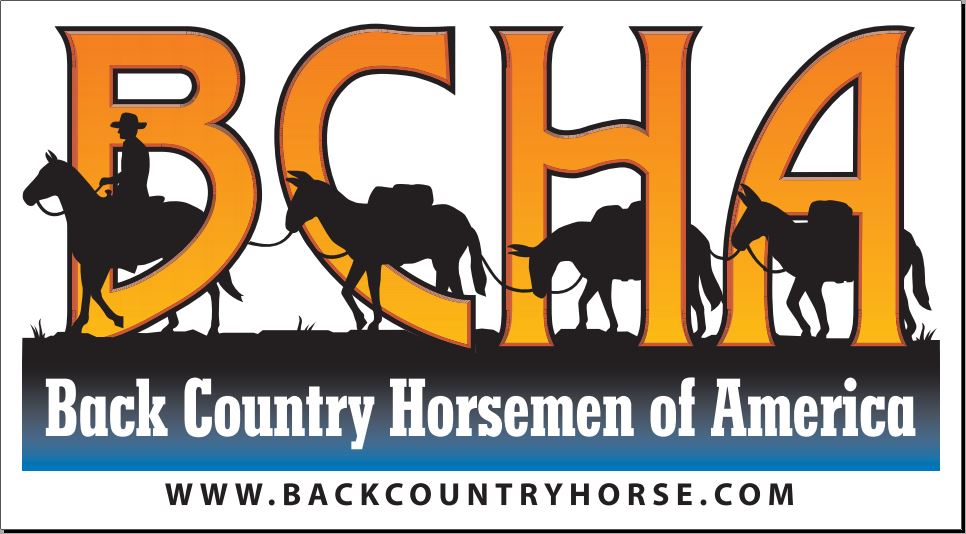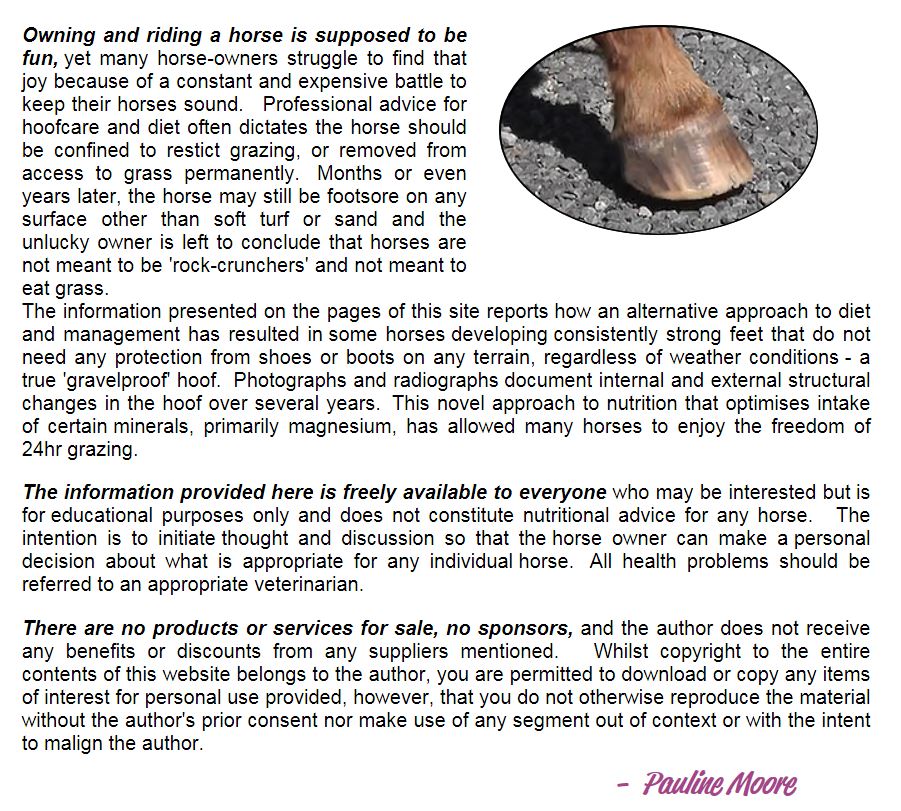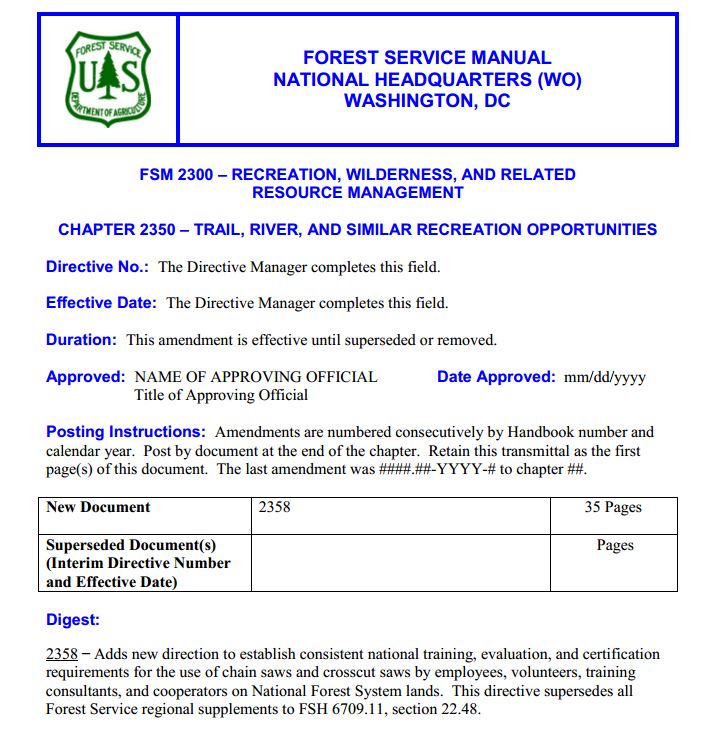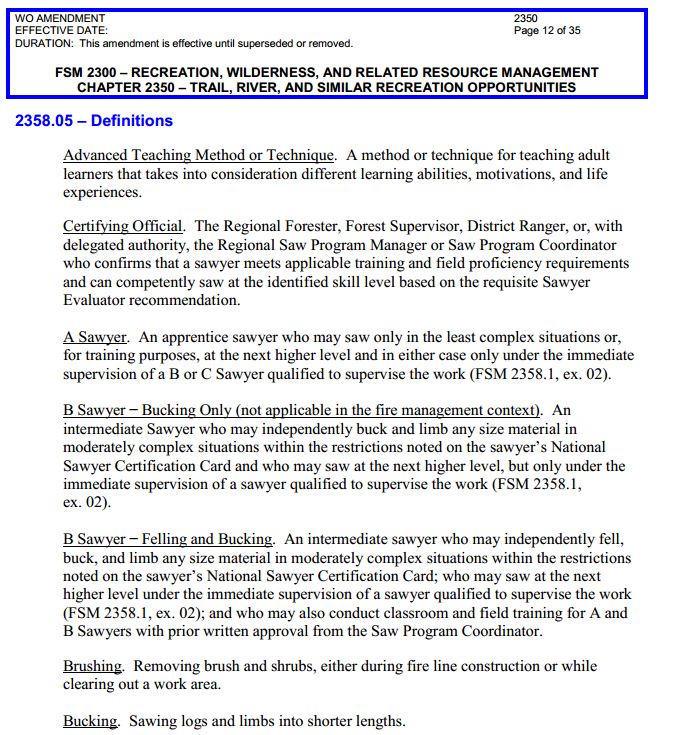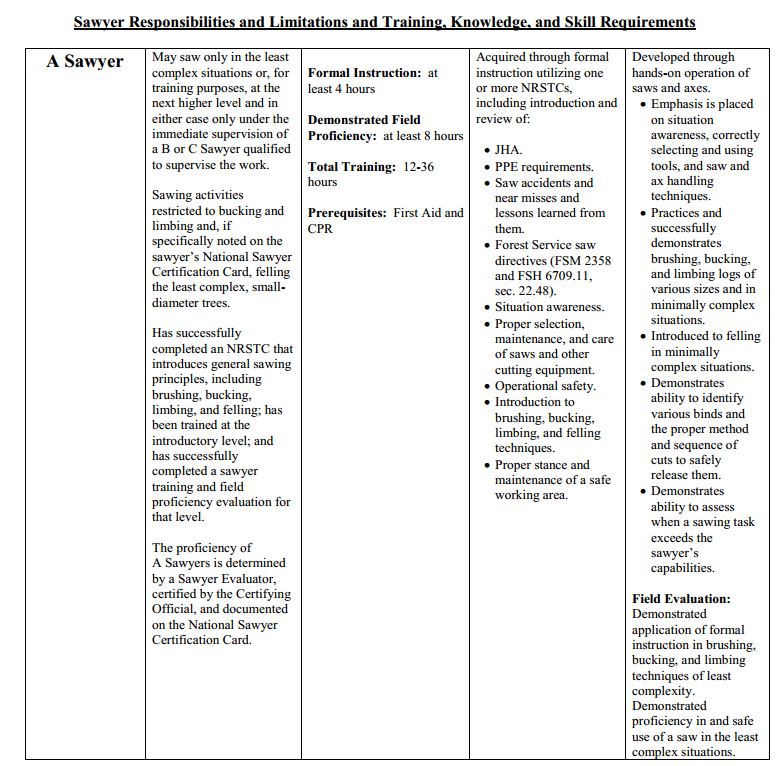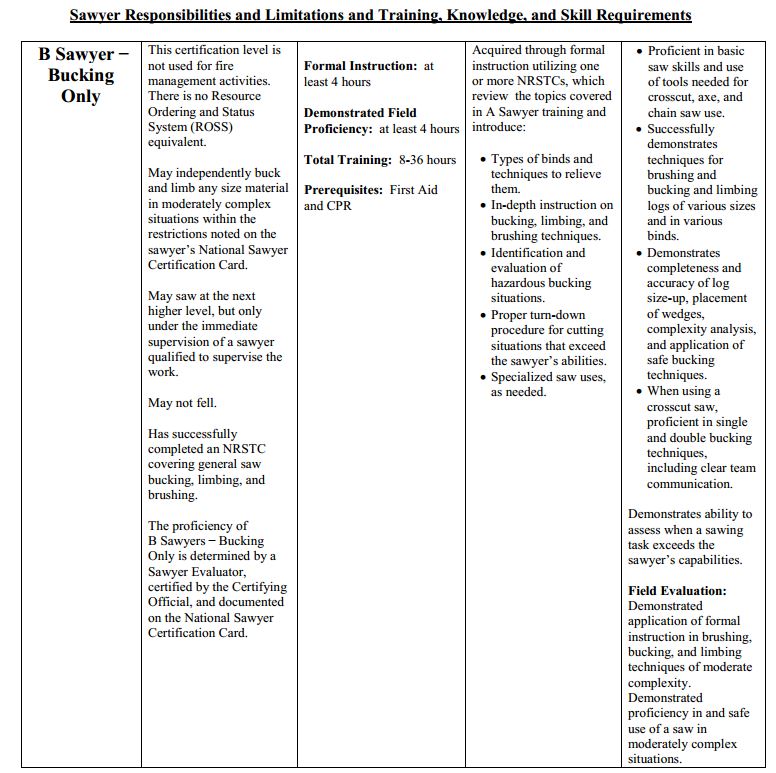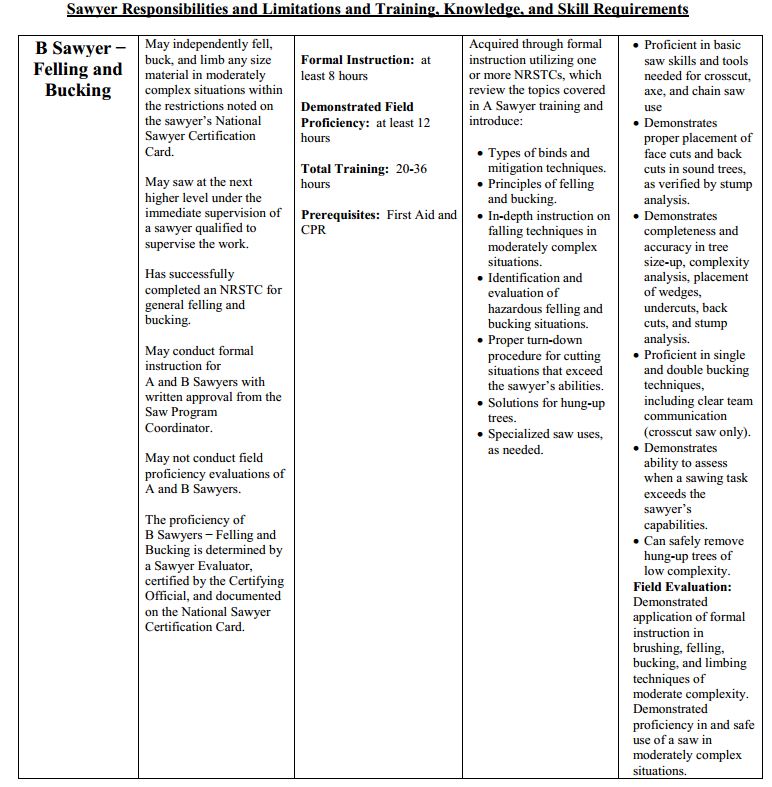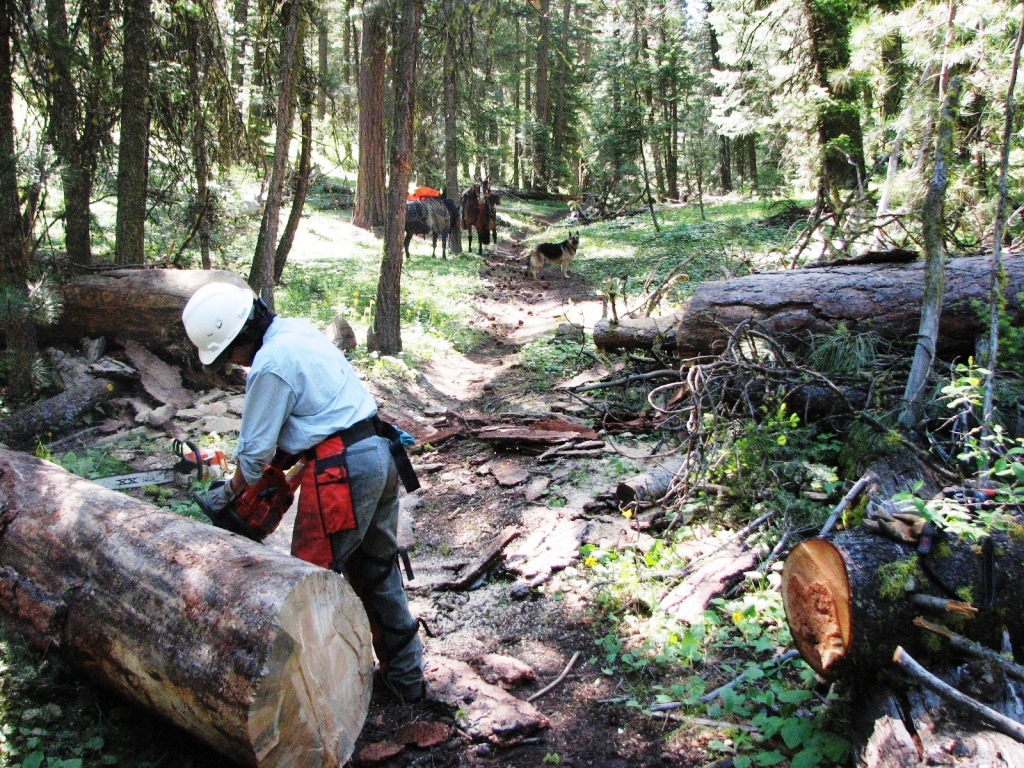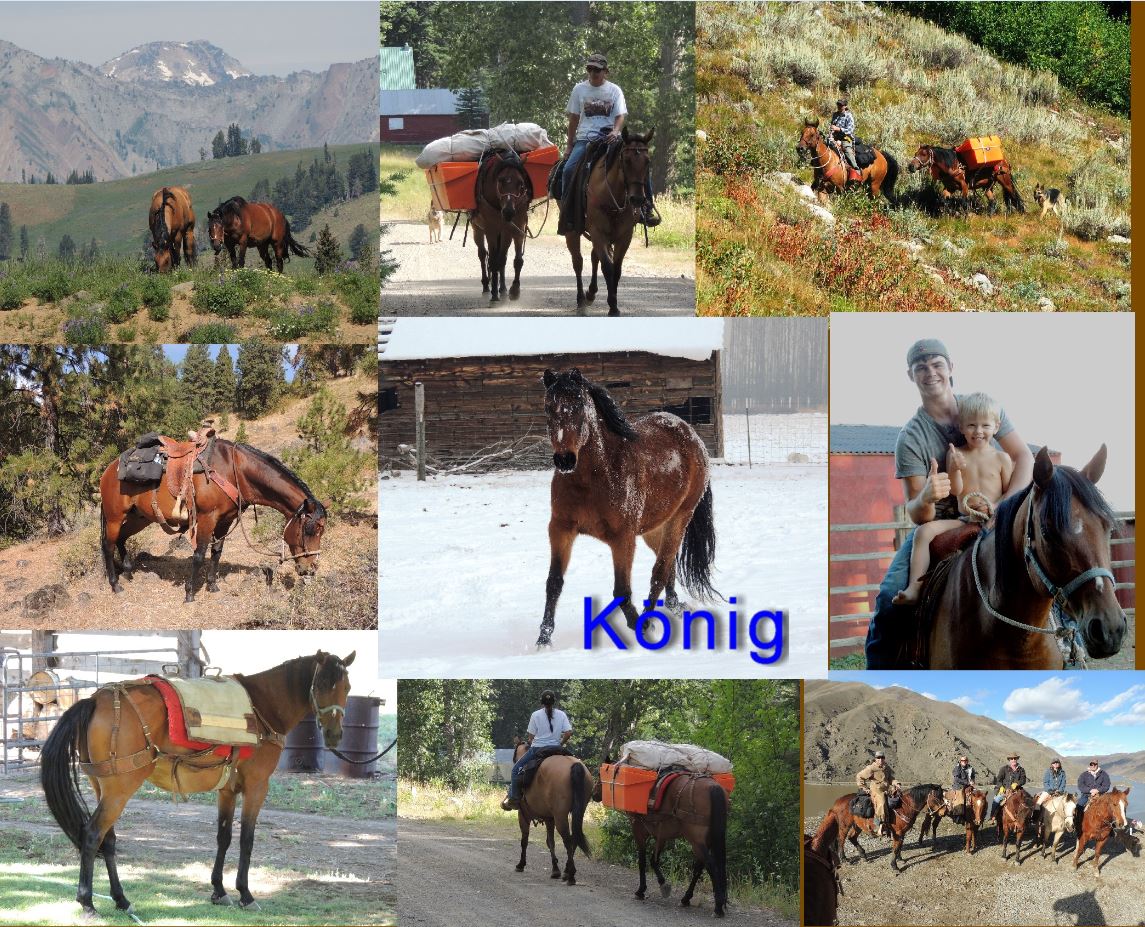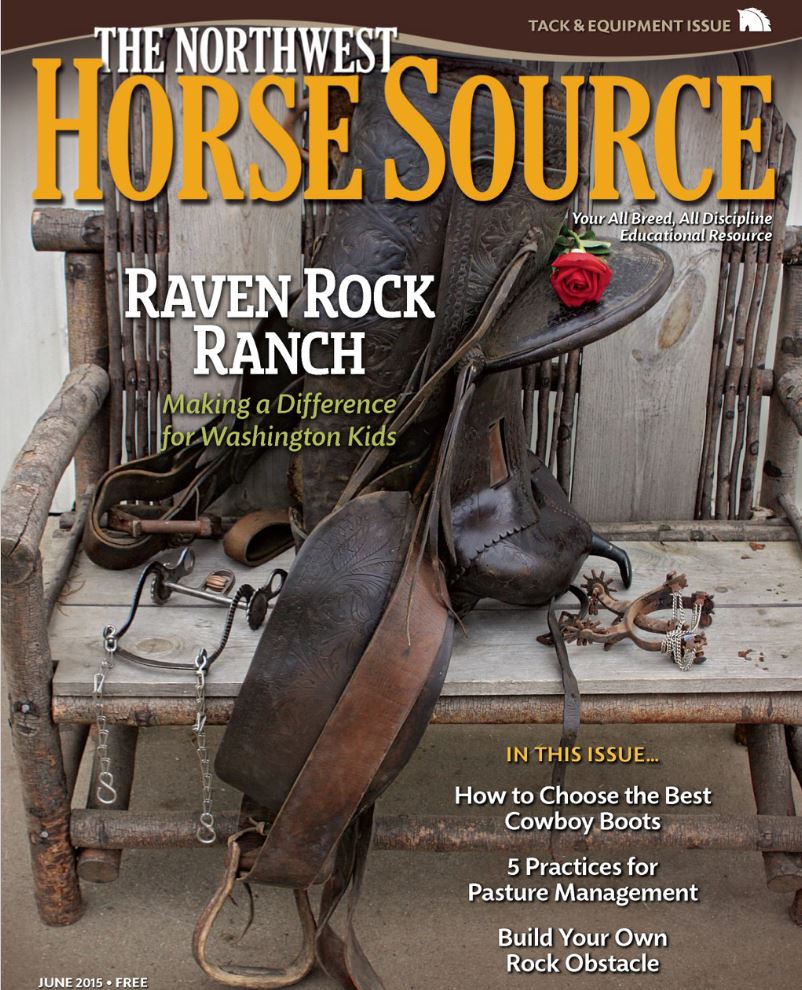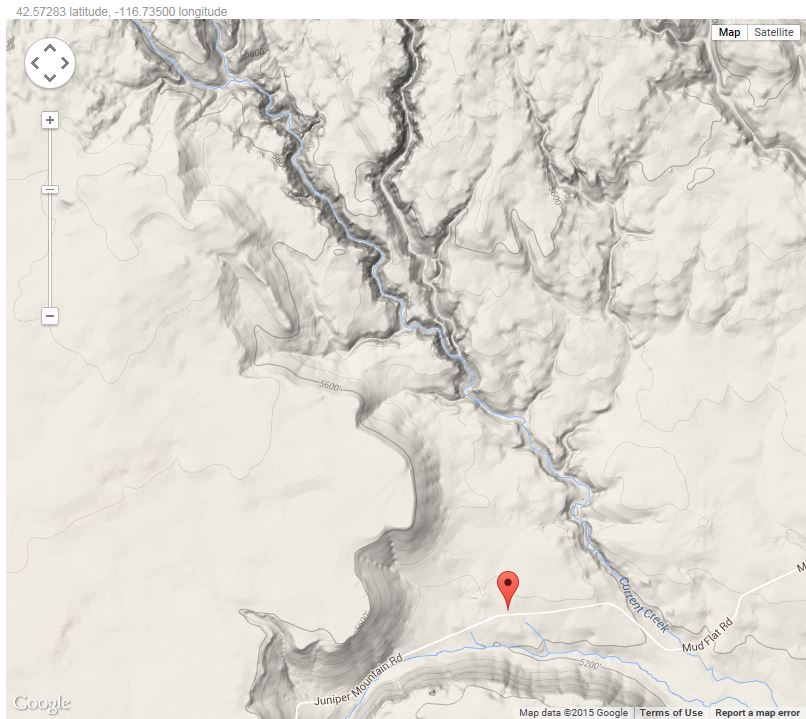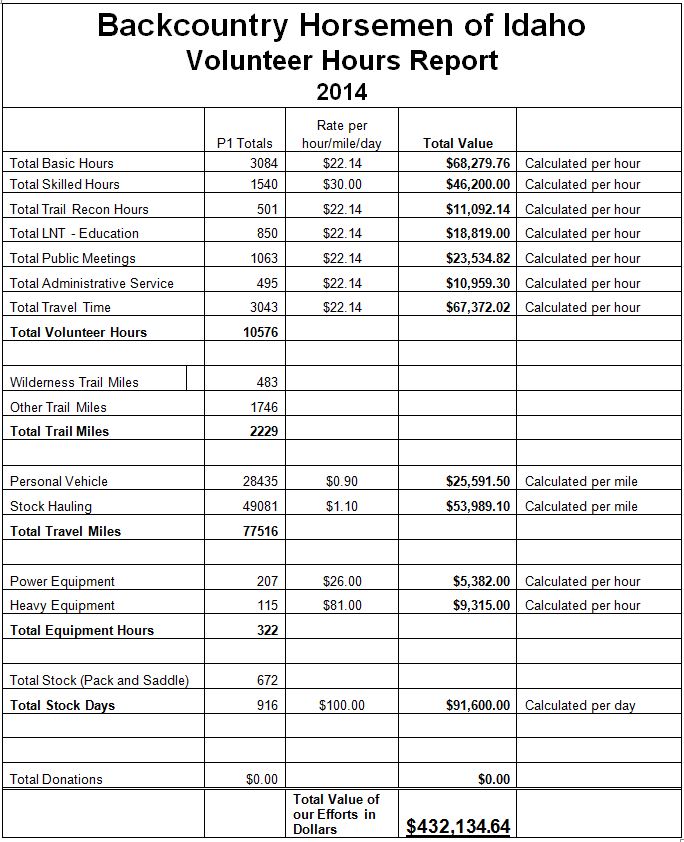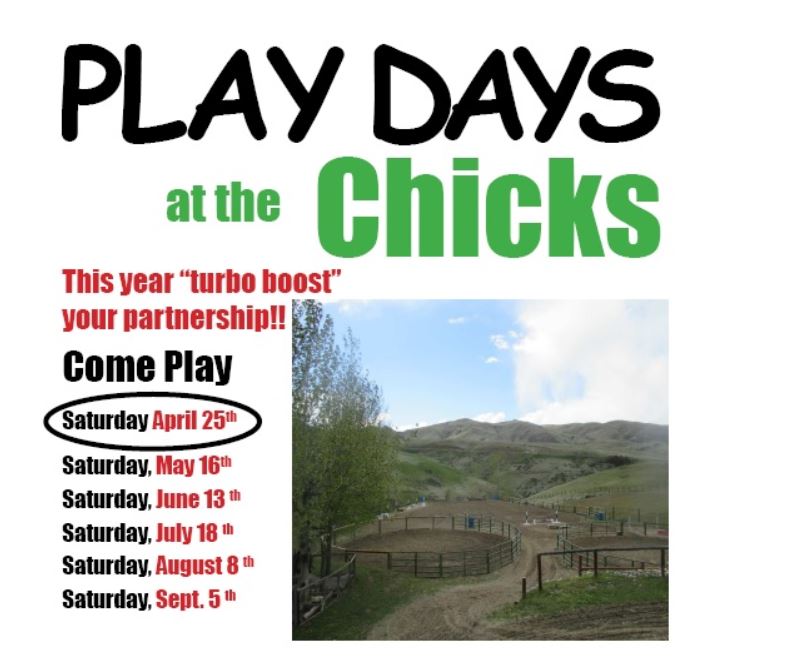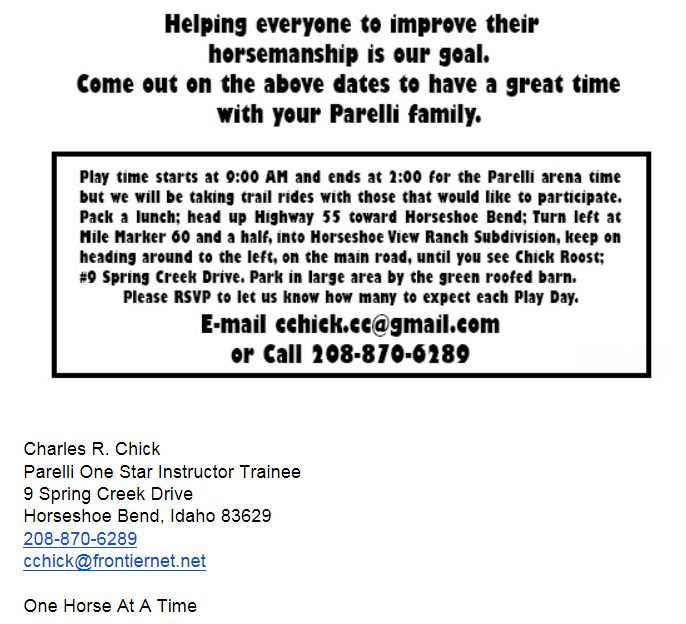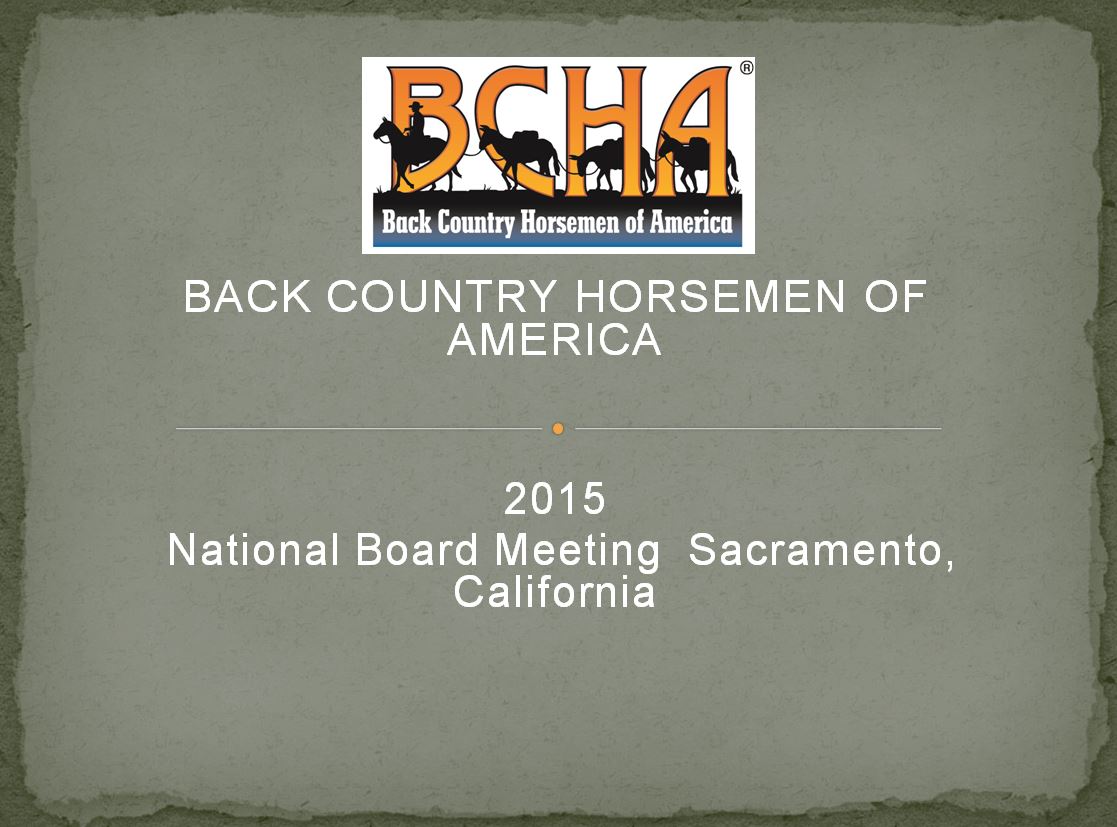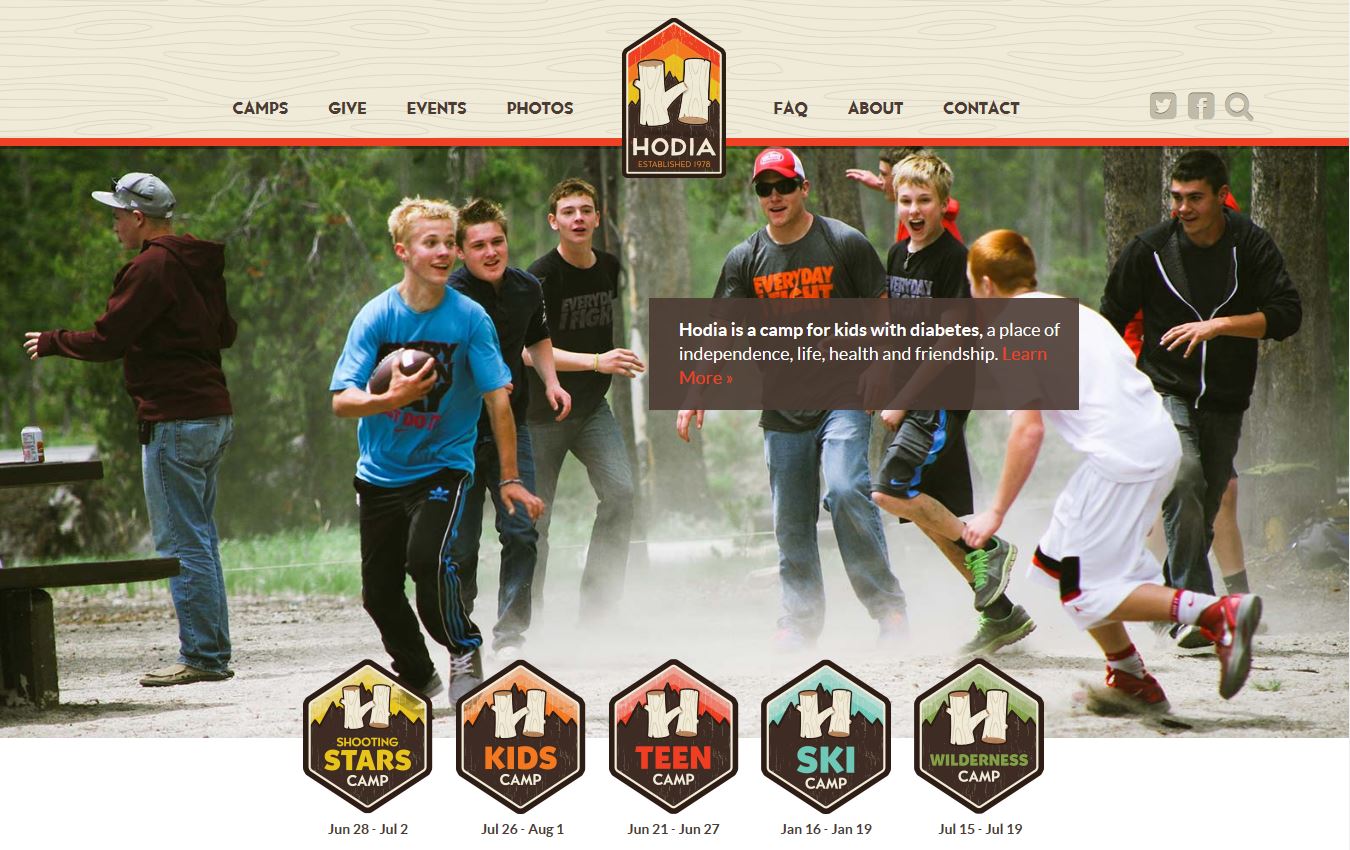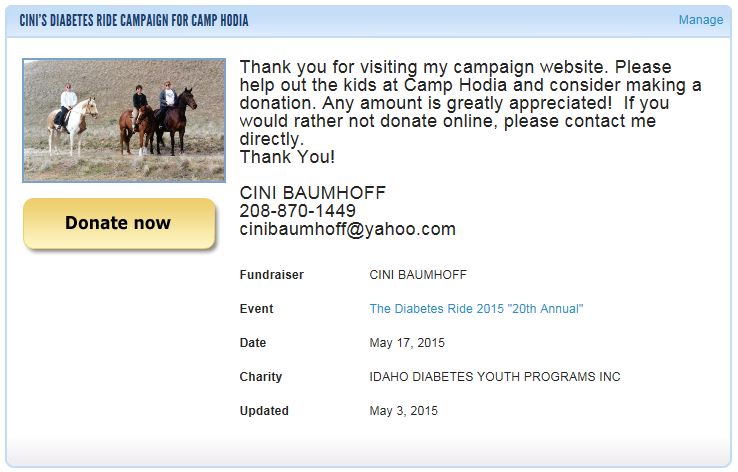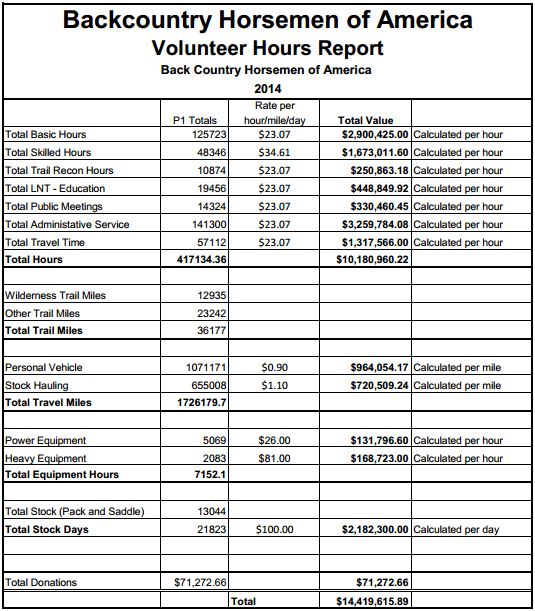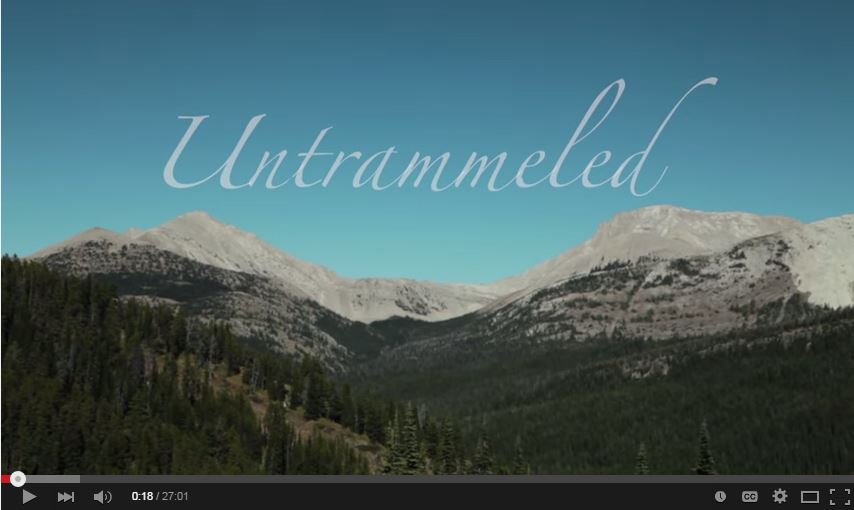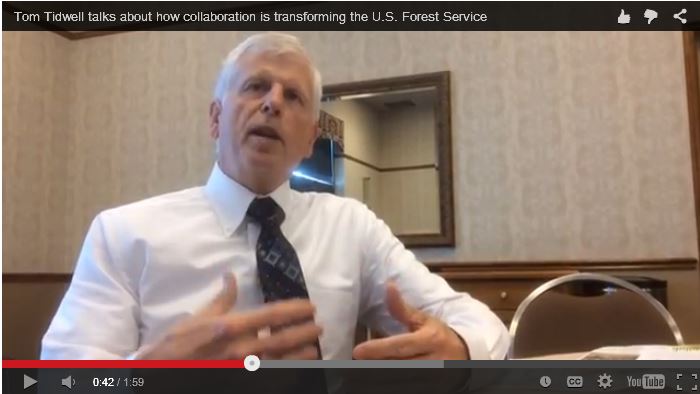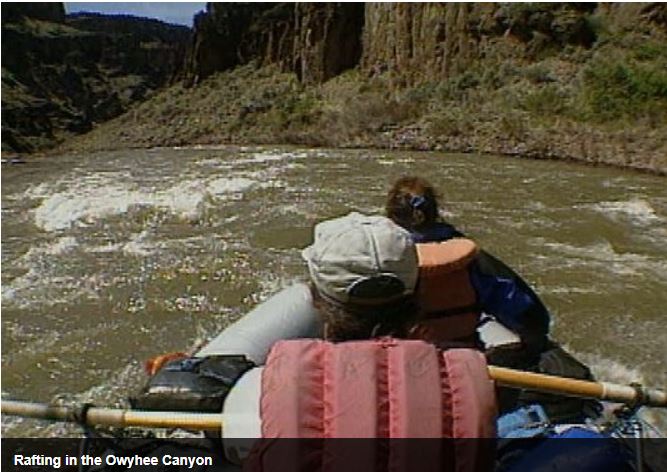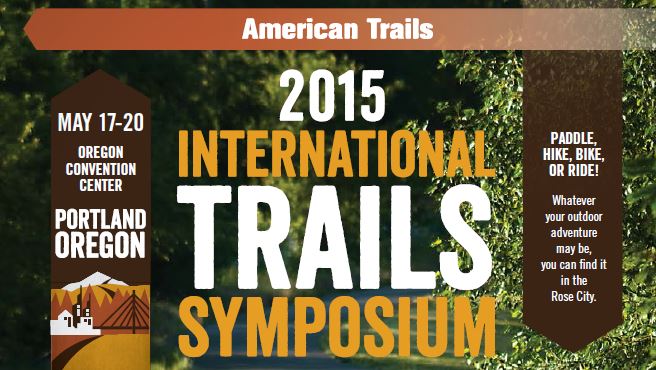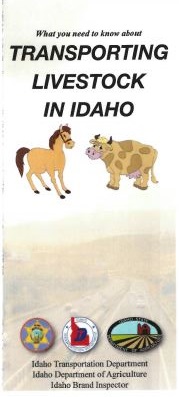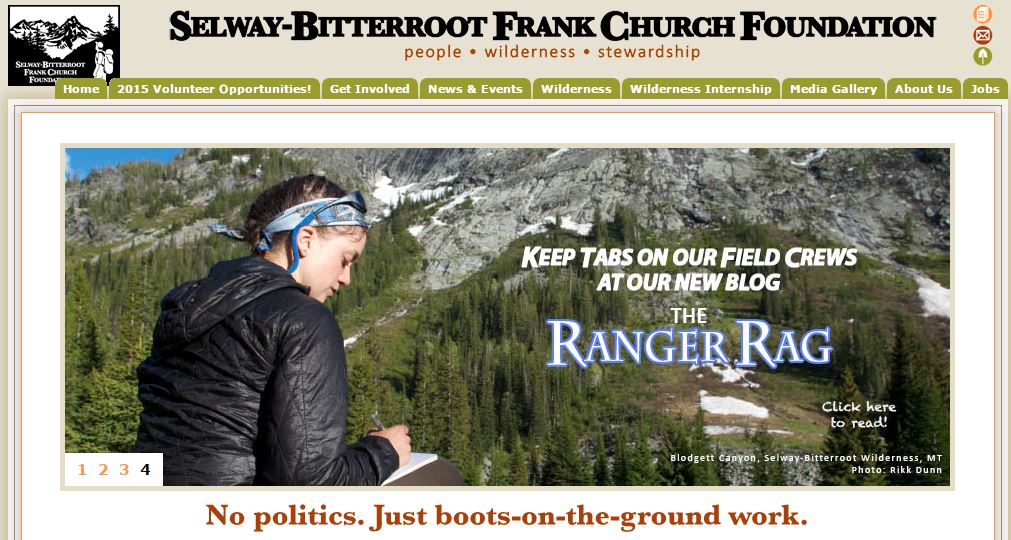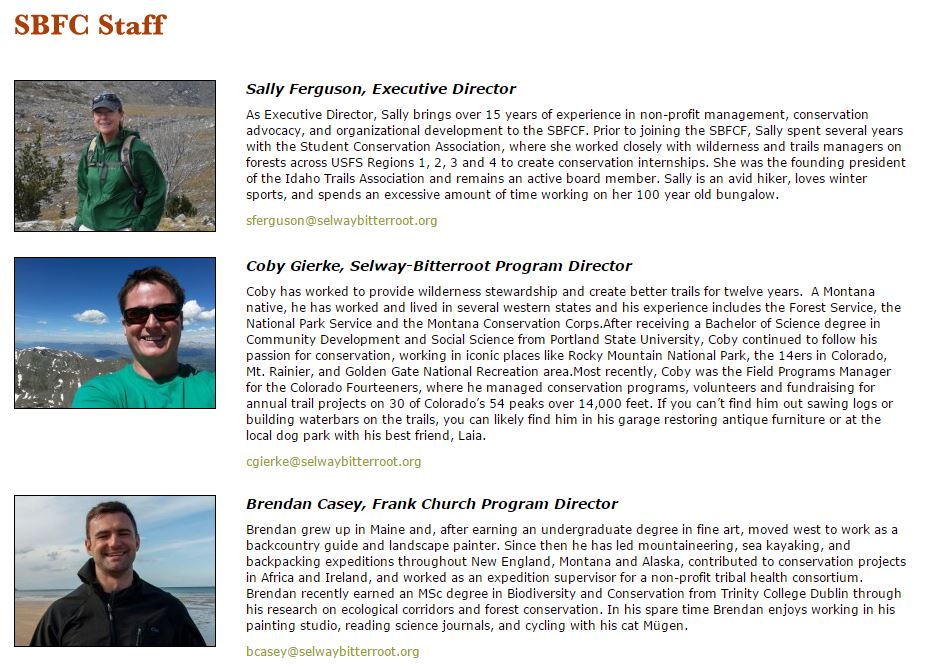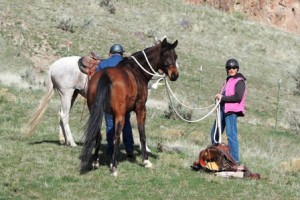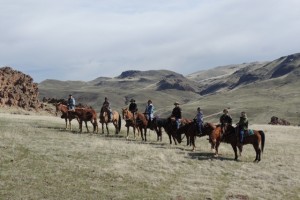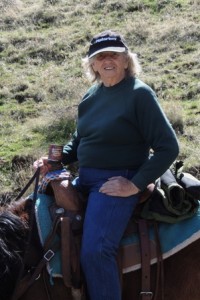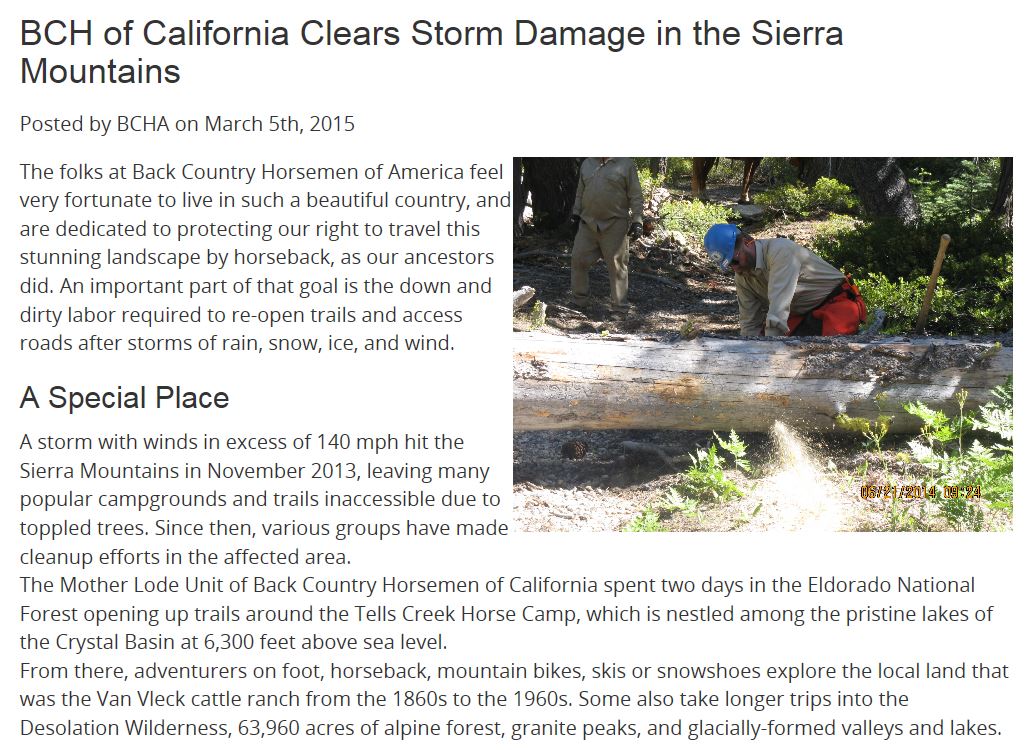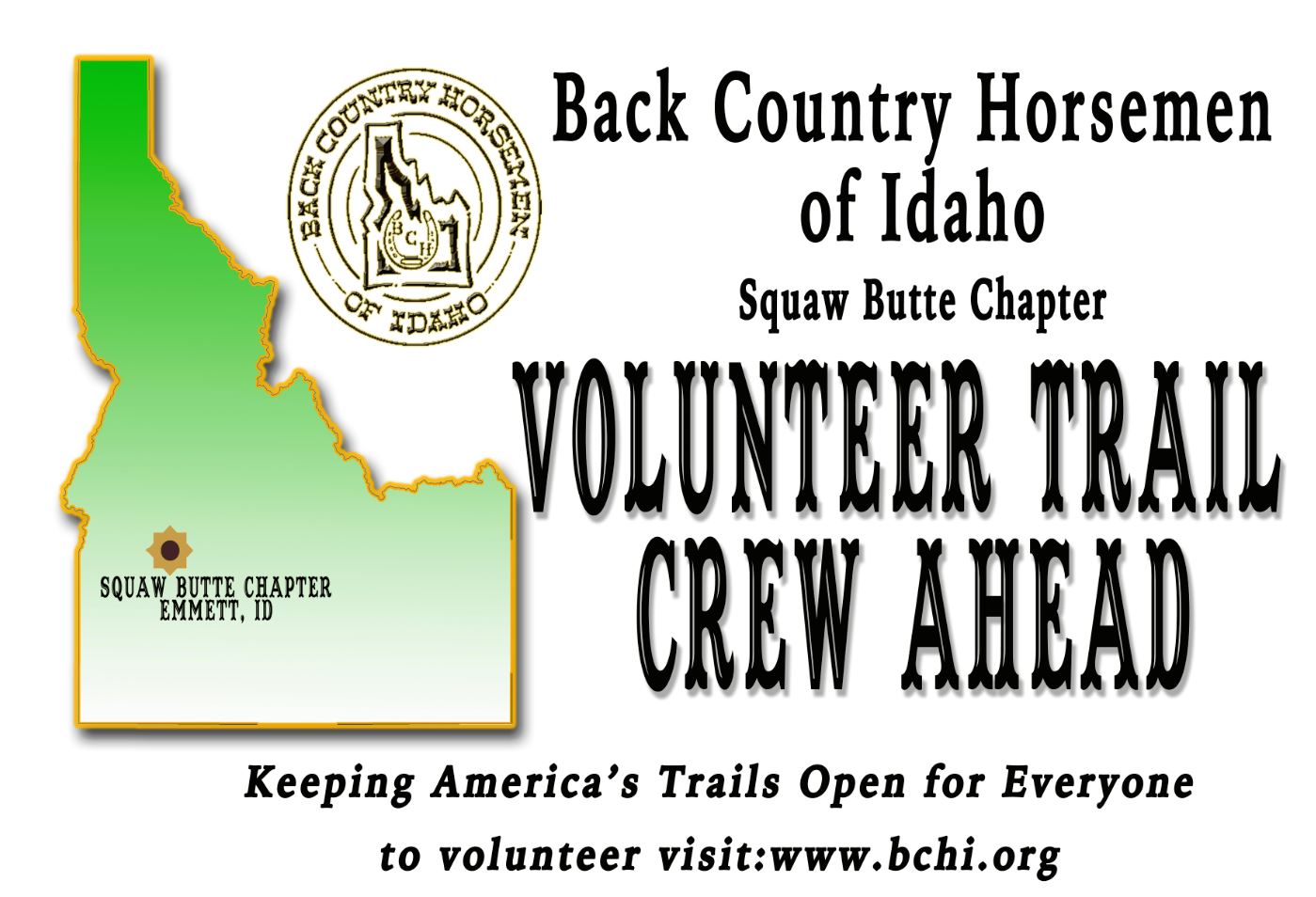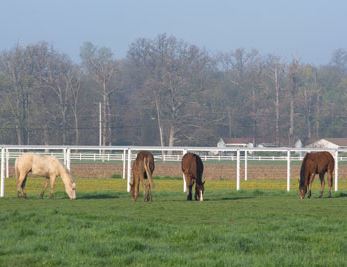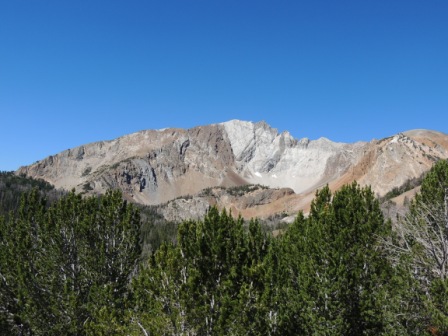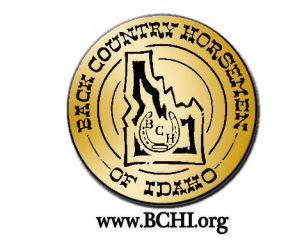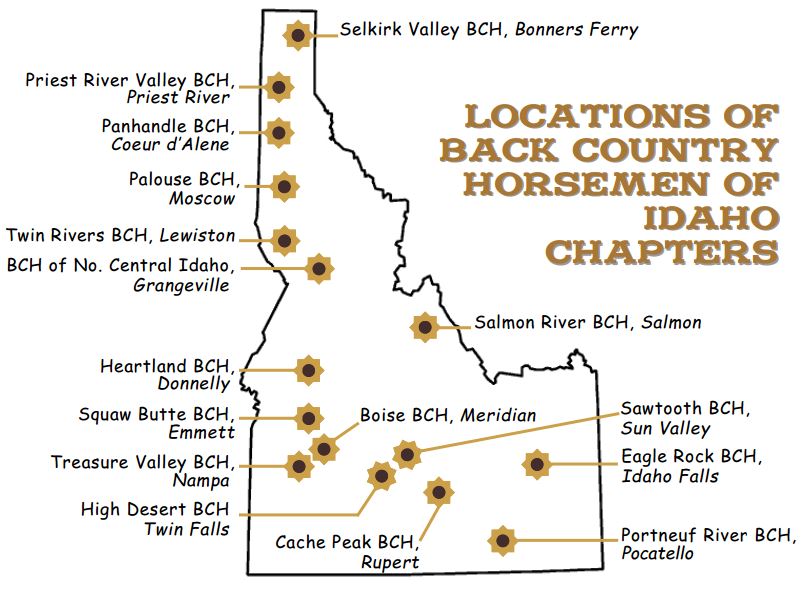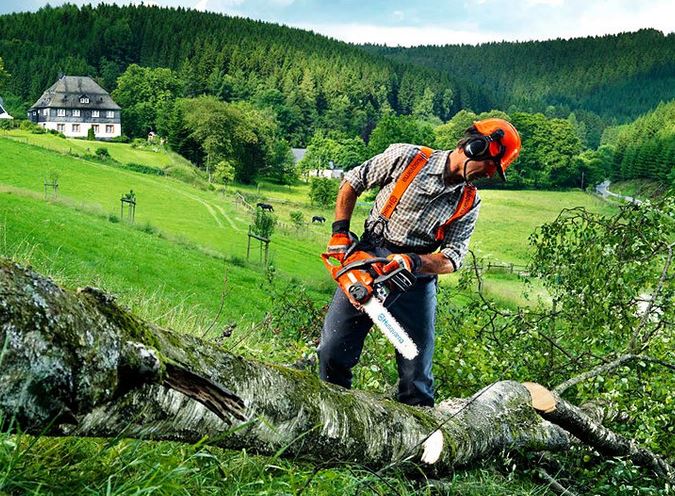 If you’re using a chainsaw and you don’t wear chainsaw chaps every time you fire up your saw then I have to say that you’re a fool. Yes, you read that correctly. Far too many homeowners underestimate the risks of using a chainsaw and as a result, they put their life in danger. I’m not going to show you any pictures in this article, but believe me, the injuries that occur from chainsaw accidents are hideous.
If you’re using a chainsaw and you don’t wear chainsaw chaps every time you fire up your saw then I have to say that you’re a fool. Yes, you read that correctly. Far too many homeowners underestimate the risks of using a chainsaw and as a result, they put their life in danger. I’m not going to show you any pictures in this article, but believe me, the injuries that occur from chainsaw accidents are hideous.
Lucky for you there are many quality chainsaw chaps to choose from and I’m going to show you some excellent options that I hope you will consider for your own health and peace of mind.
The CDC (Centers for Disease Control and Prevention) website states that “Each year, approximately 36,000 people are treated in hospital emergency departments for injuries from using chainsaws.” Please, be proactive and wear the proper safety gear. Here are additional pieces of chainsaw safety gear that will prove their weight in gold over time: Read More
Want to make a group of young girl’s day, pull into a trail head they are camping at with a couple of horse. That is exactly what happened to me on Sunday September 6, 2015. I wanted to get some trail time on my back up horse Tucker and I also wanted to finish up work I had started at Wilson Corral. Read More
Chainsaw Safety – National Interagency Fire Center
Danger! Chain Saw Safety – Training Video
Sharpen a Chainsaw Chain – Tool Tip #10 Making Sawdust? How to hand sharpen a chainsaw chain
Eight members of the Squaw Butte Chapter signed up for a trail project on TR-131 North (West Mountain Trail, or Squaw Creek as it is also known). New members Madison Seamans and his wife Annette had not been to West Mountain yet, and were a bit unsure of the driving directions. I needed to make this a day ride with other commitments on Sunday, so we planned to meet at the triangle at 08:00. Janine and Lou Ann also planned to go up Saturday morning, planned to meet up and go together. By 08:30 three trailers were cruising up the newly chip sealed Sweet Ola highway. All went well until we got to the hwy 618 turn off. Another truck and trailer had gotten between me and the group and was heading to Sage Hen. Janine and Lou Ann were talking and not navigating and followed him through the intersection. 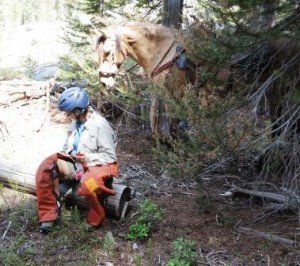 Janine quickly figured out they were on the wrong road, so they got their and Madison’s rigs turned around and we were off again. By 10:15 we were pulling up to the turn off to the trail head and Jon Seel flagged us down. He said the parking lot was pretty full up there. Janine and Lou Ann planned to camp so turned off into the camp ground and hooked up the Linda and Devon. Jon got his stock together and rode to the trail head, while Madison and I drove to the trail head and found a spot for our trailers.
Janine quickly figured out they were on the wrong road, so they got their and Madison’s rigs turned around and we were off again. By 10:15 we were pulling up to the turn off to the trail head and Jon Seel flagged us down. He said the parking lot was pretty full up there. Janine and Lou Ann planned to camp so turned off into the camp ground and hooked up the Linda and Devon. Jon got his stock together and rode to the trail head, while Madison and I drove to the trail head and found a spot for our trailers.  By 11:00 we were saddled and Jon had joined us, but no sign of the others. I expected quite a bit of work to do, so the four of us with the equipment started down the trail. It was not long before we hit the first of eighteen logs we removed from the trail. They ranged in size from six inches in diameter to one that was over twenty-eight inches. We were working on our sixth set of down fall when we heard Janine and Lou Ann talking as the rode up the trail. Devon said they could hear the saw running so knew we were not far ahead, and just took their time catching up. They caught up just in time as that is where we starting running into the bigger stuff. For the next three hours we kept three saws working steadily as the nipper crew cleared brush. The huckleberries are starting to ripen and there were a good number along the trail. Linda picked some so I expect they made it into Sunday breakfast.
By 11:00 we were saddled and Jon had joined us, but no sign of the others. I expected quite a bit of work to do, so the four of us with the equipment started down the trail. It was not long before we hit the first of eighteen logs we removed from the trail. They ranged in size from six inches in diameter to one that was over twenty-eight inches. We were working on our sixth set of down fall when we heard Janine and Lou Ann talking as the rode up the trail. Devon said they could hear the saw running so knew we were not far ahead, and just took their time catching up. They caught up just in time as that is where we starting running into the bigger stuff. For the next three hours we kept three saws working steadily as the nipper crew cleared brush. The huckleberries are starting to ripen and there were a good number along the trail. Linda picked some so I expect they made it into Sunday breakfast. At 13:00 we stopped for lunch at one of the big granite out cropping and give the stock and ourselves a bit of a rest. We than continued up the trail until 15:30. We were where the trail crosses the creek from north to south where we give the stock a much deserved drink. We also stopped at Lou Ann’s waterfall, for a group picture, which has become a tradition when riding this trail. The trip back to the trail head was quicker than the ride up had been. The lead horse changed a number of times on the way down, often precipitated by a wrong turn, or a horse unsure about the section of trail to be crossed. By 18:00 the group was back at the camp ground, horses feed or in trailers for the trip back. Most of the group stayed for the night and planned to ride Poison Creek on Sunday. It was a successful project, that was enjoyed by all!
At 13:00 we stopped for lunch at one of the big granite out cropping and give the stock and ourselves a bit of a rest. We than continued up the trail until 15:30. We were where the trail crosses the creek from north to south where we give the stock a much deserved drink. We also stopped at Lou Ann’s waterfall, for a group picture, which has become a tradition when riding this trail. The trip back to the trail head was quicker than the ride up had been. The lead horse changed a number of times on the way down, often precipitated by a wrong turn, or a horse unsure about the section of trail to be crossed. By 18:00 the group was back at the camp ground, horses feed or in trailers for the trip back. Most of the group stayed for the night and planned to ride Poison Creek on Sunday. It was a successful project, that was enjoyed by all!
World Trails Network (WTN) http://worldtrailsnetwork.org/
The World Trails Network strives to connect the diverse trails of the world to promote the creation, enhancement, and protection of outstanding trail experiences. The World Trails Network brings trail associations, trail advocates, walkers, hikers and people passionate about the outdoors together from around the world to foster global collaboration and networking for the betterment of the world’s trails.
Vision and Philosophy
The World Trails Network envisions a globally active network of diverse, high quality, environmentally sustainable trails that work in their own regions to further the interests of the trails industry for the benefit of all.
The World Trails Network fosters global collaboration and networking among all trail types that serve to connect people with nature, the outdoors and cultural heritage around the world. The Network encourages: care for the environment; sustainable development practices; sharing best management practices and trail research; a commitment to quality experiences; connections with communities; accuracy of information; promotion of cross-marketing opportunities; and through sharing the common values of world trails, promoting active lifestyles in the outdoors and nature.
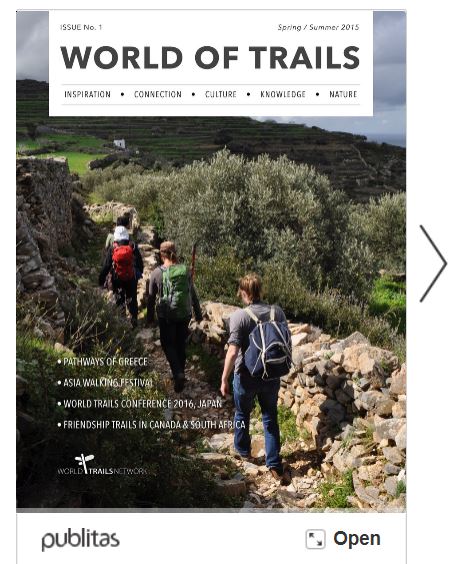
Forest Trails Bill
We need your help. Now is a critical time for our “Forest Trails” bill. A hearing has been scheduled this week on the bill before the Senate Committee on Agriculture, Nutrition & Forestry.
The hearing is scheduled for 10:00 EST on Thursday, July 16, in Washington DC.
Please contact your senators today. You can call the Capitol Switchboard at 202.225.3121 and ask to be connected to the office of one of your senators. Or you can locate contact information for your senators here.
Once connected, ask to speak to a staff person who handles public land issues for the senator. Then describe your support for Senate Bill 1110, the National Forest System Trails Stewardship Act. Consider using some or all of the talking points, below.
1. I am a resident of (state) and a member of Back Country Horsemen of America;
2. I support Senate Bill 1110, the National Forest System Trails Stewardship Act;
3. The bill is important to trail riders and all trail users in the state;
4. The bill will improve trail maintenance without adding to the federal deficit;
5. The bill is bi-partisan and supported by a wide range of public land trail users; and
6. I would like the Senator to please co-sponsor Senate Bill 1110.
Background
You’ll recall from previous alerts that BCHA, along with partners American Horse Council and The Wilderness Society, are working diligently to persuade Congress to move forward on the National Forest System Trails Stewardship Act. In the House of Representatives the bill’s number is H.R. 845. Your earlier calls and letters have been effective, as the bill now has 52 co-sponsors in the House!
The Forest Trails bill was introduced in the Senate in late April. It was forwarded to the Committee on Agriculture, Nutrition & Forestry, whose membership is listed here.
It’s critical you call your senators prior to Thursday.
More information regarding the bill can be found on BCHA’s website, for your reference. Thank you for taking action to support forest trails!
—————————————————————————————–
Get to Know BCHA’s New Chairman
Click here to view a short article about BCHA’s new Chairman, Don Saner, who was voted in during BCHA’s National Board Meeting in late April. The article appeared last week in the Jackson Hole, Wyoming, News & Guide. We’re proud of the story this article conveys about BCHA, the chapter that Don founded, and the passion for volunteer service shared by Don and Karen!
Out-going BCHA Chairman, Jim McGarvey, was term-limited. But he happily signed up to serve as BCHA’s Executive Director–on a volunteer basis, no less–for up to two years. Jim and his wife, Cindy Mitchell, have accomplished much in terms of elevating the profile and professionalism of BCHA. We’re thrilled that this dynamite duo will remain heavily engaged in BCHA’s day-to-day affairs (Cindy maintains BCHA’s Facebook site, among things).
—————————————————————————————–
View Public Land Fact Sheets on BCHA’s Website
Take a look at BCHA’s website for new fact sheets on congressional actions that could affect your use and enjoyment of federal public lands. We recently added fact sheets regarding the need to promote:
• The Wildfire Disaster Funding Act,
• Reauthorization of the Land and Water Conservation Fund,
• Keeping public lands in public hands by opposing attempts for large-scale sales or transfers of federal public lands to the states.
Lastly, we added to our website an informative slideshow presented during BCHA’s National Board Meeting (April 2015) by Dr. Rob Atwill, University of California-Davis, titled “Science and Research on Packstock and Waterborne Pathogens: Misconceptions, Realities and the Way Forward.” Check it out.
Dr. Atwill’s presentation contains some eye-popping statistics that help us push back against the (largely baseless) accusations that horses and packstock serve as vectors for the introduction of waterborne pathogens.
Thank you! Please call your senators today in support of S.1110.
Randy Rasmussen, Advisor for Public Lands & Recreation
Back Country Horsemen of America
Back Country Horsemen of America | | peg@bcha.org |
P.O. Box 1367
Graham, WA 98338
My farrier/equine podiatrist, Melissa Smith, pointed me to this article: http://www.gravelproofhoof.org/. She mentioned a woman in Emmett who had 3 minis that foundered (out of her 4). After a bunch of research and Melissa talking to the vet listed below, they are making a connection between diet/nutrients and hoof health (and health in general), specifically magnesium chloride. Magnesium chloride, among other things, seems to be one of the important links to healthy hooves. Read the article and if you have questions or questionable horse hoof issues, contact either Melissa or Madison and they may be able to help you. I know Melissa continually studies so she’s on top of the latest and greatest in the equine podiatry scene. If you have pasture, you can have your soil tested at Western Laboratories (Ellen and Charles have had this done) to see what may be missing in your soil.
Seamans, Madison MS DVM
Veterinarian
Cornerstone Equine Medical Services
Specialty: In Depth Podiatry
madisonseamans@gmail.com
208-365-4085
Kuna, ID
Smith, Melissa NT
Certified Equine Podiatrist,
Pathology Rehabilitation,
Instructor
barefoottrim@msn.com
208-880-1667
Wilder, ID
Soil testing (Parma): $50
http://www.westernlaboratories.com/
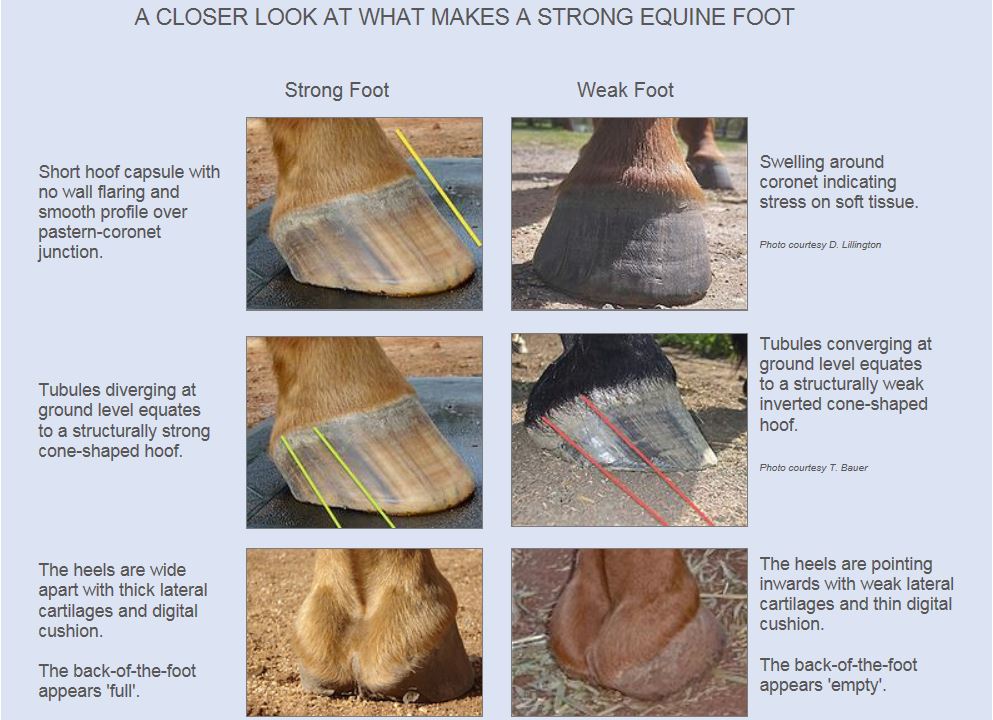
By Marybeth Conger and King
After seeing Laurie’s email, I had a feeling King would be a great addition to the Conger herd plus help me to heal from the loss of our Fred horse.
So, while I was celebrating my Mom’s 90 birthday in New Hampshire, Bill brought King home. He immediately put his hoof down with our mules (good thing) as they quickly got and respected that he was now number 2 in our herd, after Bill’s Scout horse.
Bill packed King twice while I was gone. King only broke the pigging string once, and quickly learned the distance and the pressure of the pigging string. Actually, Bill was impressed with King and the job he did in our string as a pack animal. One time, Bill packed King with my saddle, breast collar etc. on, so King could get use to the sound, feel and smell of my stuff.
I have ridden King twice now. The first time, was just a short loop around our neighborhood and along the canal. On this maiden ride, I followed behind Bill and Scout, so I could get to know King a bit. The second time, we went in the lead which really helped him to focus on moving forward and build confidence. I learned that day, that King is willing and tries hard to do what is asked of him. After this ride, it was horse bath time with the hose and yep, there is more work to be done with horse bath time at the Conger’s.
Today Ron, our horse shoer was out. At one point King was all alone tied to our hitching with no problems. The plan is some ring work with King where I will focus on neck reining and leg aides, but I will always keep riding him in the hills. Several things I am impressed with, King knows whoa and is very sure footed. Plus, at my age, I find it so refreshing to get up on a shorter animal.
I am so happy to have King as an additional member of our four legged herd. More chronicles to follow, and even some from King. Stay tuned.
 On Wednesday June 10, 2015 Phil Ryan and Rob Adams at the request of the Idaho Department of AG, International group meet with a delegation of Korean forest service employees and businessmen in the Korean horse industry. The day was to talk about horse trails on public lands. The recreational horse industry is only about twenty years old in Korea, but growing very fast. There is a push by riders to have trail in the public forests of Korea.
On Wednesday June 10, 2015 Phil Ryan and Rob Adams at the request of the Idaho Department of AG, International group meet with a delegation of Korean forest service employees and businessmen in the Korean horse industry. The day was to talk about horse trails on public lands. The recreational horse industry is only about twenty years old in Korea, but growing very fast. There is a push by riders to have trail in the public forests of Korea.
 We took the group on a loop that included stops at Peace Creek trail head and Boiling Springs trail head in the Middle Fork of the Payette country. We talked about multi-use trails, how a trail should be built for horse use, bridges, fire and clearing down fall. They ask a lot of good questions and got to see some very pretty country. One of the Korean guests, the gentleman wearing the riding helmet was really taken with Phil’s F250.
We took the group on a loop that included stops at Peace Creek trail head and Boiling Springs trail head in the Middle Fork of the Payette country. We talked about multi-use trails, how a trail should be built for horse use, bridges, fire and clearing down fall. They ask a lot of good questions and got to see some very pretty country. One of the Korean guests, the gentleman wearing the riding helmet was really taken with Phil’s F250.
 After a white knuckled ride on the single track road between Peace Creek and Boiling Spring, our Korean guest had a nice lunch at the camp ground. We then took them back to Sweet, so they could see some “American” horses up close. What is more “American” than Rob’s mustangs. We also did a mini-packing demonstration which they found very interesting. More Pictures
After a white knuckled ride on the single track road between Peace Creek and Boiling Spring, our Korean guest had a nice lunch at the camp ground. We then took them back to Sweet, so they could see some “American” horses up close. What is more “American” than Rob’s mustangs. We also did a mini-packing demonstration which they found very interesting. More Pictures
Good Morning Phil & Rob,
On behalf of the Department of Agriculture, I wanted to send you big thank you for hosting the Korea Forest Service Delegation last week. We appreciate your efforts putting the tour of the Boise National Forest together and providing them information about trails, trail riding, packing and everything else. This was valuable information for them to develop their plans for increasing trails and services for the growing equestrian market in South Korea. They enjoyed the time spent with you and were excited about the things they learned and were able to see. Especially the time at your home learning about the different horses, pack equipment and saddles. What a treat!
We really appreciate your cooperation and time showing these government officials why Idaho is a leader in the equestrian industry. Thank you again and we value the support your organization provided to us.
Best Regards,
Pam
Pamela Graviet
International Trade Specialist – Market Development Division
Idaho State Department of Agriculture
2270 Old Penitentiary Road
Boise, Idaho USA 83712
On Thursday June 11, 2015 Phil Ryan and Rob Adams meet with John Hidy the trail supervisor for the Boise National Forest to look at the first 1/2 mile of trail at Wilson Corral, on West Mountain.
This trail starts out in a bog and then goes down the center of the creek for a couple hundred feet. Both the bog and the creek section are dangerous and have been the scenes of more than one wreck. Our goal was to introduce John to this trail and consider possible route changes to the trail to make it safer and more sustainable.
Phil, John and I looked at a number of different route options, some requiring a lot of new trail to be build, other making the most of existing trail, but still allowing the trail to avoid the problem areas and think we have a viable set of options.
John GPS a possible route, will write up a report including some of the pictures we took and present it to the forest service. The plan if approved would be implemented in the 2016 trails season. After completing out work at Wilson Corral we gave John a tour of the other trail heads as we drove back to Sage Hen and then back to Sweet. The road between Wilson Corral and Sage Hen is a mess of ruts, washout and small land slides. A number of BIG rocks were on all the road we traveled over the last couple of days. More Pictures
Cows are way scarier than bears and other such truths
The Boundary Trail maintenance project would be the first SBBCHI project where I would leave my camper at home. An unusually hectic weekend meant turning this project into a day ride. Fortunately, the Payette National Forest is practically in my backyard. The Boundary trailhead is an easy 50 miles haul from my driveway. I loaded Jack early Saturday morning for the haul up 95 to the Seid Creek turnoff. Being camper-less would turn out to be the “first” of several “firsts” for me during this National Trails Day weekend
Click the link below for the complete story:
Now at his new home with Bill & Marybeth Conger
König
(aka King aka Acorn)
His name is König (pronounced Kurnig and means King in German) – my grandson can’t pronounce it so calls him Acorn.
8.5 year old quarter horse mustang gelding (born October 2006)
Approx 14.2 hands – 800-900lbs
He has awesome mustang feet and has been all over rough country barefoot. I do put shoes on him if I am going to be doing a lot of road riding or riding on the Weiser River Trail. Most of the time, he is unshod.
König was literally born on the trial. He was part of a string whose original owner traveled from Wyoming to Idaho and into Oregon on horseback. König has carried a pack most of his life.
He travels calmly through forest, desert and on busy downtown streets.
He rides nice as well. While he is not a bridle horse (arena type work) he handles nicely and carries himself very well. He has never had a bit in his mouth so I use a hackamore. The first time he was ridden we jumped on bareback with a halter and rode all over the Eagle Caps.
On a pack trip into the White Clouds, an unfortunate turn of events left us short a riding horse. We swapped König’s pack saddle for a riding saddle and a very inexperienced rider rode him throughout the remainder of the pack trip. I’ve used him as a backup horse when my regular riding horse has been laid up.
While he excels as a pack horse, I think he would make a fun kids horse and an awesome trail horse for somebody. He would not make a great arena horse without work in the bridle – although he has a decent stop and is responsive to basic leg cues when riding down the trail. His trot is a little rough for me – but I am use to a big, thoroughbred type gate. His lope is very nice and he can out-walk anything I have. Even though he has been ponied a lot, he has no issues taking the lead when I’m riding him.
He ponies like a dream. You never know he’s back there and is extremely pack aware.
He loads, trims, shoes, hobbles, high-lines, ties, etc..etc. No bad habits that I have seen, ever. When I first got him he was picketed most of his life, so he ties very well (does not pull back and is patient) He’s been on pasture since I’ve had him the last 3 years and is usually easy to catch. I often have to catch him first in order to catch my hard to catch horse.
When I am not using him, I pony him to keep him in shape and his feet solid for packing season.
I am not packing as much as I used to and won’t be using him enough to keep him. He is too nice a boy to turn out on pasture.
By Rob Adams
It is Friday; I am sitting at my desk at the Simplot data-center trying to finish stuff up so I might get away from the office by 15:00. My cell phone starts buzzing in my pocket. I answer and it is Phil Ryan. Phil asks” if I carry a tow chain in my truck”, which I do. I said “yes”, and he said “good, because Jon doesn’t have one” and hung up.
Great, I knew they were on their way to the North Fork of the Owyhee wilderness and Phil felt we might need a tow chain. Another thing to fret over! We already didn’t have a clue if we could or even should try and pack the old barb wire out that had been rolled up the year before, now there was concern that we would get our rigs stuck also.
On May 16, 2015 nine members of Squaw Butte meet up with four Boise National forest rangers for a sawyer recertification session. We met at the Triangle parking lot and truck pooled up to the third fork ranger cabin.
The weather was expected to be wet and windy so everyone dressed like they were going duck hunting in Maine.
Read More: Sawyer Training 2015 Pictures
Chain Saw and Crosscut Saw Training Course–Student’s Guidebook (U.S. Forest Service)
Introduction and Chapter 1
Chapter 2 – Chain Saw Use and Maintenance
Chapter 3 – Chain Saw Tasks and Techniques
Chapter 4 – Crosscut Saw Tasks and Techniques
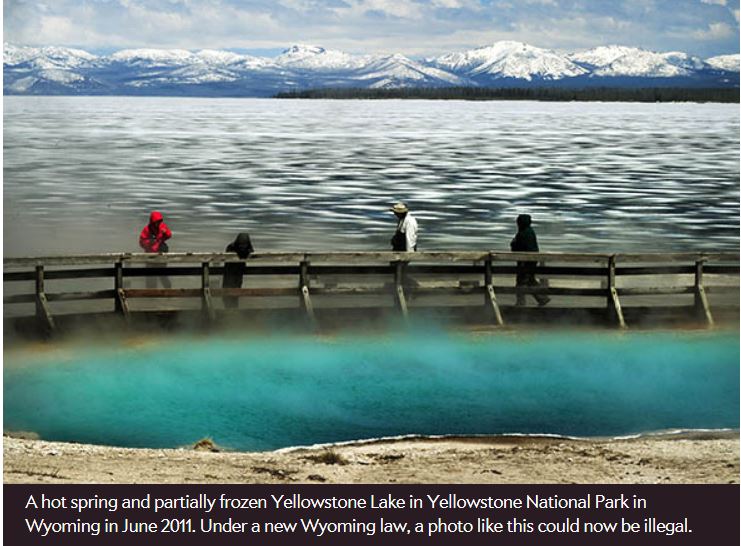
Imagine visiting Yellowstone this summer. You wake up before dawn to take a picture of the sunrise over the mists emanating from Yellowstone hot springs. A thunderhead towers above the rising sun, and the picture turns out beautifully. You submit the photo to a contest sponsored by the National Weather Service. Under a statute signed into law by the Wyoming governor this spring, you have just committed a crime and could face up to one year in prison.
Wyoming doesn’t, of course, care about pictures of geysers or photo competitions. But photos are a type of data, and the new law makes it a crime to gather data about the condition of the environment across most of the state if you plan to share that data with the state or federal government.
Wyoming law against data collection: Protecting ranchers by ignoring the environment.
I am participating in The 20th Annual Diabetes Ride on May 17, 2015, in support of Camp Hodia, which provides a wonderful service to Idaho Kids with Type 1 Diabetes. I am committed to raising much-needed funds to support this worthy cause, and with your help through pledging, and sharing this link with friends and family, we can all help make a big difference in the lives of Idaho Kids!
You can quickly and easily make a tax-deductible donation today through my secure fundraising website: Cini’s Fundraising Page where your gift will make a big difference for Idaho kids. Any amount, large or small, is greatly appreciated as is your willingness to forward this on and request others help as well.
If you would like to take a few minutes and learn more about Camp Hodia, please view this YouTube video or perhaps check out their website: www.camphodia.org and perhaps even join in your own pledge raising campaign for this amazing organization!
Thank you!
P.S. If you have any questions or if you would prefer to donate by check or cash, please contact me directly.
Cini Baumhoff
208-870-1449
cinibaumhoff@yahoo.com
This was our third and last get to know Back Country Horsemen, public fun ride for the 2015 riding season. We had encouraged members to bring friends to the first two rides and did again for this ride. Friend introducing friends to BCHI had been our most successful method of getting active new members. Lou Ann trying to get the word out wider posted the ride on the Just Horsin’ Around web site. It was successful as eight of our twelve guest came from that posting.
When I arrived at the trail head parking lot, a number of trailers I didn’t recognize were already parked. I said to my guest Rose, looks like another group is holding a ride. After unloading my stock, I spoke to a couple of woman saddling up horses at the trailer next to us. I said “What group are you a member of?” Oh, we are here for the Back Country Horsemen ride we saw posted. “oh”. I said, and then “Welcome” and introduced myself. I quick tour of the other trailer had the same results. Soon trailers, I did know started showing up, including Lou Ann. I made her go around and greet all the guest she invited
After all had saddled up, we held a greeting and safety meeting and broke up in to two groups. The first group lead by Terry and Laurie left first for Wilson Creek canyon and the second group followed about fifteen minutes later.
Highlights of the ride was Shannon demonstrating a new technique for creek crossing, Chick’s new Arab gelding, a rattle snake suggesting we take a slightly different route, one that didn’t go quite so close to him, and the exploration of some canyons I had not ridden before on the east side of the road.
The Potluck afterwards featured taco’s and SOAPS (Sin on a pretzel stick)
Watch 3 Miles An Hour – a Montana PBS documentary that showcases our Wilderness Trips
The Story of a Forest Ranger 1954 USDA-US Forest Service
Watch “Untrammeled“. This is a movie about getting youth out in the wilderness, some for the very first time, and passing the baton of wilderness stewardship to this younger generation. Bob Marshall Wilderness Outfitters had a huge role in making this movie a success. We hope you enjoy it.
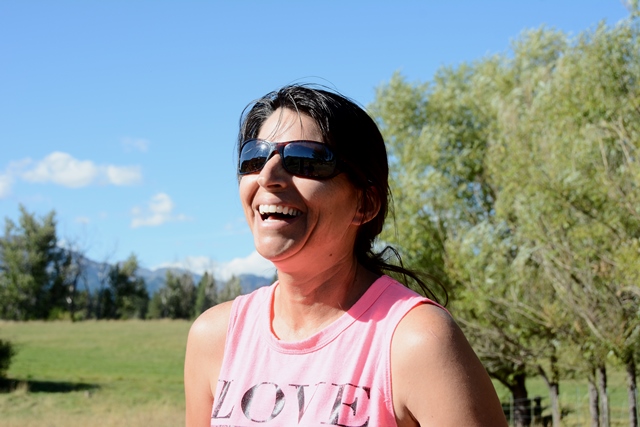 (Sin on a Pretzel Stick) by Laurie Bryan
(Sin on a Pretzel Stick) by Laurie Bryan
Enjoyed by all who attended the April 26 Wilson Creek Ride in the Owyhee’s
1 bag of large pretzel sticks (salted)
2 bags of caramels
4 TBS evaporated milk
1 bag mini chocolate chips
1 bag peanut butter chips
1 bag butterscotch chips
1 bag heath candy bar crumbles
1 jar salted peanuts
Put all the ingredients (except the caramels and milk) in a pan large enough to hold them. I used a 13×9. I also crushed up the peanuts using a rolling pin. I used about ¾ of the jar of peanuts.
Melt the caramels and evaporated milk in the microwave. I checked it every 40 seconds and stirred. Be careful not to burn the caramel. It doesn’t take much.
Break the pretzel sticks in half and dip ¾ of the way in the caramel and roll in the chip/peanut mixture. Set on wax paper to harden. That’s all there is to it. The hardest part is un-wrapping all those stinking caramel squares. The second hardest thing is not eating the entire batch yourself.
This could be varied a dozen different ways. Add more of what you like, and less of what you don’t. Allergic to peanuts? Take them out. Like coconut? Add a cup or two. I don’t know if these have an official name – but I call them Sin on a Pretzel Stick. They are so good they should be illegal.
I got the base recipe from Karen Kelley ENJOY!
Forest Service Chief Tom Tidwell has an answer when he hears state leaders call on the U.S. Forest Service to do more logging and other forest treatments to reduce the size of wildfires.
“We are doing more and we’re doing it for less money,” Tidwell said in an interview with the Idaho Statesman on Thursday.
The Forest Service has reduced its nonfirefighting staff by 39 percent since 2000. But its Collaborative Forest Landscape Restoration Program alone has treated 1.45 million acres over the past five years and harvested 1.2 billion board feet of timber from national forests.
The program funnels money to projects that were developed with local residents, the timber industry, conservation groups, sportsmen and Indian tribes. These groups, such as the Clearwater Basin Collaborative and the Payette Forest Coalition, make the projects easier to complete because they have broad community support, Tidwell said.
“Without this we wouldn’t have been able to take on the scale of these projects,” he said.
He’s asking Congress for $20 million more annually so he can expand beyond the 23 existing projects to other forests and groups seeking to work together. Eventually Tidwell said he envisions the collaborative model approved by Congress in 2009 used to manage the Forest Service’s entire 193 million acres of forests and grasslands. That includes about 20 million acres in Idaho.
“We’ve built enough trust so we can move forward and make this the norm,” Tidwell said.
In Idaho, the Weiser-Little Salmon project has resulted in four timber contracts since 2012, which has allowed the Evergreen lumber mill near New Meadows to add a second shift and create 15 new jobs.
One contract that’s halfway completed generated 3.4 million board feet of timber, enough to build 5,000 homes. The $690,000 that Evergreen paid for the timber goes back into restoration, road closings and wildlife habitat improvement.
The Selway-Middle Fork forest restoration project in the Clearwater Basin received $16 million, which has been augmented by $13 million in matching funds. It is generating $14 million in labor income, reducing fire risk on 16,000 acres, treating weeds on 16,800 acres more and improving 16,000 acres of wildlife habitat.
“Forest restoration efforts are now demonstrating a track record of creating jobs, reducing the threat of wildfires and improving forest health on our public lands,” said U.S. Sen. Mike Crapo, who helped advance the Clearwater Basin Collaborative. “Collaborative efforts like these get us back to work in our forests and are one step, among others, we need to take to restore the economies of our rural counties.”
That doesn’t mean the states can’t help. A “good neighbor” policy expanded by Congress in the last farm bill allows states to work with the Forest Service to get projects done. Oregon is paying millions to crews who mark trees for sales. Montana is paying for the environmental reviews on some sales to get them moving. In Washington’s Colville National Forest, a large landscape restoration project is going out to bid, with the buyer paying for the environmental review in exchange for the wood products from the project.
The Idaho Legislature approved a Senate resolution calling for Idaho’s congressional delegation to help increase funding and develop agreements whereby the state could carry out restoration efforts on some federal lands.
Tidwell, who attended Capital High School, was in Boise to address a conference on wildland fire safety. Safety will be especially important this year, with warm temperatures across the West melting the snowpack early.
Tidwell expects another long fire season, and that’s why he hopes Congress approves a bill that will stop him from having to take money from other programs to fight fires. That will improve the agency’s efficiency, he said. “It’s past time for us to treat these large fires as a national disaster,” Tidwell said.
He hears critics saying he and other decision-makers should return to the levels of timber harvests that took place in the 1970s and 1980s. The Forest Service needs to get “more work done,” Tidwell said, but can’t go back to those levels.
“I think we’re doing a better job than we ever did,” he said.
Guest Opinion: Infrastructure is key to healthy, growing forests
BOISE, Idaho (AP) — Federal authorities have made public the final management plan for six wilderness areas and 16 wild and scenic river segments in southwestern Idaho, starting a 30-day appeals process.
The U.S. Bureau of Land Management on Monday published on the Federal Register the Owyhee Canyonlands Wilderness and Wild & Scenic Rivers Management Plan.
The process allows for appeals to be made during the next 30 days concerning the state’s newest wilderness areas that include about 518,000 acres and 325 miles of wild and scenic river in Owyhee County. The six rugged areas became federally protected preserves in 2009 after U.S. Sen. Mike Crapo, R-Idaho, cobbled together a coalition of ranchers, wilderness advocates, outdoor enthusiasts and others in an effort called the Owyhee Initiative.
“This is certainly a milestone, and we’re looking forward to reviewing the document and seeing if it’s captured the intent of the Owyhee Initiative,” said John Robison of the Idaho Conservation League. “It’s the kind of wilderness area we’re going to keep as it is. Come if you’re up for it.”
The 99-page federal document contains rules ranging from floating on rivers, hunting and grazing livestock.
“The purpose is not to have improvements,” said MJ Byrne, spokeswoman for the Bureau of Land Management’s Boise District, who emphasized visitors need to be self-sufficient. “The purpose is to keep its wild, wilderness character.” Wilderness list & maps
Kevin Lewis of Idaho Rivers United said he hadn’t had time to review the document. Members of the Owyhee Cattlemen’s Association didn’t respond to emails from The Associated Press on Monday.
The sweeping land-use package added six wilderness areas and opened other previously off-limits areas to motorized recreation, livestock grazing and other activities. It also provided ranchers with cash and federal land in exchange for giving up private land and giving up grazing rights on some public land.
Grazing remains on portions of the wilderness, and there are both private and state land inholdings. Byrne said ranchers during the last five years have sold property that’s been added to the wilderness. Numbers weren’t available Monday.
Byrne also said Idaho and federal officials are working on a land swap to trade state land within the wilderness for federal land outside of it. But she described that process as in its formative stage.
While wilderness designations generally prohibit mechanized equipment, it will be allowed in some areas associated with pre-existing rights, the plan says. The final plan also prohibits goats as stock animals and domestic sheep grazing to protect California bighorns in the wilderness from potential diseases.
If an appeal is filed, the group filing the appeal has 30 days to supply a reason. Byrne said an appeal starts a review process.
The six wilderness areas are the 50,929-acre Little Jacks Creek Wilderness, the 12,533-acre Pole Creek Wilderness, the 42,413-acre North Fork Owyhee Wilderness, the 267,328-acre Owyhee River Wilderness, the 52,826-acre Big Jacks Creek Wilderness, and the 89,996-acre Bruneau-Jarbidge Rivers Wilderness.
Some areas are only about 45 minutes south of Boise, but other portions are more remote with little access. Byrne said it’s not clear if the wilderness designation increased travel to the area.
“(The plan) does provide for full stewardship of the treasure of the Owyhee Canyonlands,” Byrne said. “And they are treasures.”
 Like many people, I was bewildered that U.S. Sens. Mike Crapo and Jim Risch recently voted in favor of a resolution that could allow the transfer of federal lands to states.
Like many people, I was bewildered that U.S. Sens. Mike Crapo and Jim Risch recently voted in favor of a resolution that could allow the transfer of federal lands to states.
For the record, I think it’s a long shot at best the federal government will ever transfer title of its lands, but I will get to that later. It still concerns me that Idaho’s two senators are deaf to Idahoans’ loud-and-clear message to protect and preserve our public lands.
It’s an issue that unites a bear hunter in Orofino with a backcountry skier in Ketchum. Both know how important those lands are to the fabric of Idaho’s communities. Public lands keep people grounded in rural communities and drive others to leave cities to recreate and renew themselves in Idaho’s backcountry. If there’s a non-debatable motherhood-and-apple-pie issue in Idaho, it ought to be public lands.
What’s equally baffling is why these two senators would vote for this misguided legislation. Both have shown leadership and wisdom in managing federal lands. Crapo spent years crafting a balanced and comprehensive package for the Owyhee Initiative that satisfied a broad swath of Idaho’s citizenry from ranchers to backpackers and ATV riders to bighorn sheep hunters.
“The best way to make decisions about our environment and land is through cooperation and collaboration, and we have done that with the Owyhee Initiative proposal,” Crapo said after its passage.
Now he seems to be favoring a hostile takeover instead of “cooperation and collaboration.”
As for Risch, during his brief stint as Idaho’s governor, he put to rest a decades-old struggle over Idaho’s roadless lands by making most of them off limits to intensive development while loosening restrictions that made some lands challenging to manage. The Clinton administration signed off on Risch’s plan, and many called it a model for other states to follow in dealing with their roadless federal lands.
Earlier this month in the Statesman, Crapo tried to explain his recent vote with the Republican majority in a party-line 51-49 vote by saying that laying the groundwork for transferring federal lands doesn’t mean he actually supports doing it. That sounds a lot like the squishy substance that sticks to my truck’s tires when I drive through a cow pasture.
Risch has been quiet about his vote. Maybe he’s hoping it will blow by like a spring rainstorm and the sun will keep shining in his political world, but I think there’s a bigger storm brewing than either realize.
If Western politicians want to hitch their wagon to a losing proposition, transferring or selling federal lands is it. I think it’s an issue that will goad apathetic voters to the polls and make people vote across party lines. Selling the Forest Service and BLM lands where Idahoans camp, fish, hunt, hike, ski, snowmobile, ride motorcycles, ATVs, mountain bikes and horses, where they go for picnics, Sunday drives and to pick huckleberries, is just a bad idea.
Sell off granny’s secret huckleberry spot at your own peril, senators.
The idea of federal lands being traded or sold off has been around since the 1970s during the failed “sagebrush rebellion.” It was a bad idea then, and I would venture it’s an even bigger loser now brought on by politicians a little too comfortable in their seats, or who are trying to make a name for themselves more for political reasons than practical ones.
Look at Texas senator and presidential candidate Ted Cruz, for example. He can pander to the Tea Party crowd without worrying about the backlash from his home state because Texas is less than 2 percent federal lands.
I expect this nonsense from the Statehouse. Demanding the feds to turn over about 62 percent of Idaho’s land it manages is good political theater. It may win votes in places like Custer County, where about 90 percent of the county is federally owned, and they aren’t happy with how it’s managed.
It’s a jaded, cynical attempt to turn back the clock. Because this isn’t about who owns the lands, it’s about how the lands are managed. There’s a sad sentiment that lingers among some Idahoans that if we could go back to Grandpa’s days, all would be good in Idaho. Mostly it’s in rural Idaho that has leaked jobs and population for decades, and the “Feds” are supposedly to blame.
That attitude has become toxic, and it’s what fuels people like Nevada rancher Cliven Bundy to nearly start a modern range war because he didn’t want to pay the federal government for grazing fees he owed.
It also ignores the fact that federal lands are owned by all Americans, not just those who live near them in the West. Show me the benefit of land transference to a family from back East who wants to go rafting on the Middle Fork of the Salmon River. When they’re awed by the rugged, pristine beauty of the Middle Fork, I doubt they will clamor for the federal government to turn it over to the state.
Mainly, it won’t fly because it’s bad policy, and I think the majority of Idahoans will rise up and loudly reaffirm that. That’s not to say I have no gripes with the current management of federal lands. Most are under-managed, under-funded and borderline neglected. I think, even when we agree locally and nationally on what’s good management for federal lands, getting anything to change is a byzantine, glacial process mired in red tape.
But Crapo and Risch have shown the ability to navigate that bureaucracy and come out the other side with something lasting and meaningful that benefits Idahoans. It’s not easy, but it’s a better option than aligning with wingnuts and their hot-breathed, hostile-take-over rhetoric that’s doomed to failure because it’s a stupid, far-fetched idea borne out of frustration rather than reality.
 Midas Gold controls the world class Stibnite Gold Project, located in the historic Stibnite-Yellow Pine mining district in central Idaho, consolidating ownership of this important past-producing gold district under one owner for the first time in its history. With a multi-million ounce high-grade open-pit gold resource already defined, important antimony credits, and significant room for further growth, Midas Gold’s Stibnite Gold project is one of North America’s premier development stories.
Midas Gold controls the world class Stibnite Gold Project, located in the historic Stibnite-Yellow Pine mining district in central Idaho, consolidating ownership of this important past-producing gold district under one owner for the first time in its history. With a multi-million ounce high-grade open-pit gold resource already defined, important antimony credits, and significant room for further growth, Midas Gold’s Stibnite Gold project is one of North America’s premier development stories.
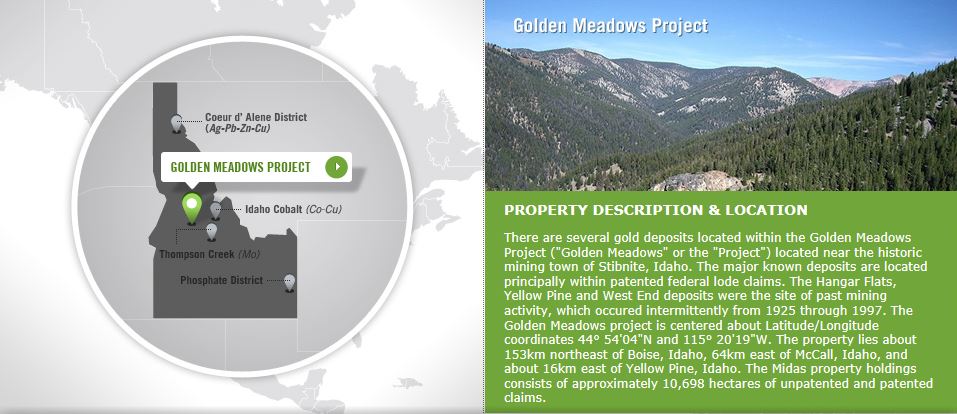
Transporting Livestock in Idaho EIA MOU ID_WA_OR
***Please read below the word from the State of Idaho***
It means you no longer need a coggins test on your horse when traveling in or between IDAHO, OREGON & WASHINGTON. However, you DO need a Health Certificate signed by a veterinarian and a permit number (obtained thru a vet for Washington & Oregon). This is good news and should save everyone some time and money if just traveling the Northwest this summer!
The Idaho State Department of Agriculture has signed a Memorandum of Understanding with the states of Washington and Oregon to allow an exemption to the EIA test requirement on horses moving between the 3 states. The MOU is attached.
Effective April 6, 2015 – Equine moving between the states of Idaho, Oregon and Washington are exempt from having a current EIA (Coggins) test prior to movement. All equine are still required to have an interstate Certificate of Veterinary Inspection (iCVI or Health Certificate) prior to interstate movement. This testing exemption applies only to equine traveling between the states of Idaho, Oregon and Washington.
Please contact the ISDA with any questions at 208-332-8540.
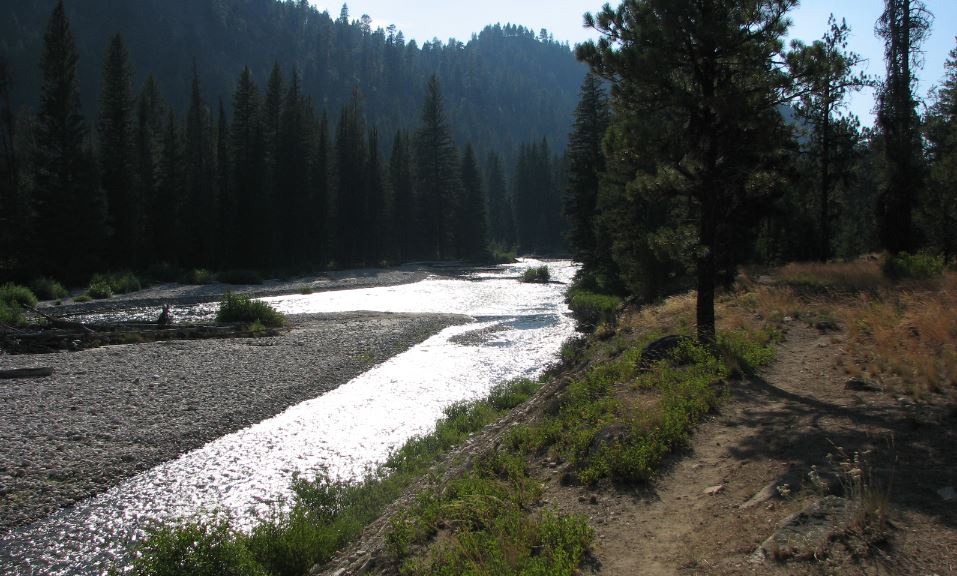
The thing about scams and the people behind them is that they are often successful. Some scams are easy to spot, such as the Nigerian cousin you didn’t know you had who is in immediate and dire need of wired cash. The best scams — the ones that fool people — are more subtle, such as reckless efforts to convince Idahoans and other Western state residents that our public lands system is broken and that we all should give up our rights by transferring shared national lands to the states.
Arguments asserting states’ rights have been made to appeal to strong federalist sensibilities in Idaho. Statements that the federal system is broken and the state can fix it sound awfully appealing. But the state land grab isn’t about states’ rights; it’s about your rights to access your public lands.
Rarely do those in the west hold up Eastern states as places we ought to mimic. Advocates of taking away public land in Idaho have declared that Western states, unlike our fortunate Eastern brethren, got a raw deal when our country was formed, because we have less private and state land within our borders. According to these advocates, New Jersey and Maryland got it right, and Idaho got it wrong. In their view, having millions of acres where we all can camp, hike, fish and hunt without having to ask a landowner for permission means Idaho got it wrong.
Let me paint a picture of what it would be like if public lands are turned over to the state. Expect that all recreation uses will be subservient to extractive uses. State of Idaho lands are not public lands and are managed for maximum economic return, by constitutional mandate. Be ready for your favorite camping spot to be closed off, and don’t be upset if your hunting spot is now posted with a “no trespassing” sign. You may even find an oil rig or mining operation behind that sign.
Idahoans don’t travel to Maryland to go hunting, and rarely do we travel to New York to go camping. People from back East come here — and dream about the chance — to chase a wild bull elk or raft the Middle Fork of the Salmon, because we have what they don’t: access and wide-open spaces. We live in a place where money doesn’t buy your ability to hunt, fish, raft, bike, hike or ride your motorized vehicle. If you think the smoke and mirrors of state management won’t change that, think again.
The state Legislature has been “studying” the ability of the state to take public lands for the past two years. The state would have to either jack up taxes or sell public land to pay for management, because there is absolutely no way the state can afford to pay the estimated $111 to $390 million per-year cost to manage public lands. Sane minds would have thought it ended there, but recently the Idaho House of Representatives passed a compact bill (HB 265), joining other special interest lobbying groups, to spend your taxpayer dollars fighting to take your public lands. Just last week, Sens. Mike Crapo and Jim Risch voted in favor of a budget measure that would facilitate the sale of public lands.
If this sounds crazy, it is. Yet the scam continues.
The next time your elected official tells you they support the state of Idaho taking over your public lands, tell them to keep their hands off your property. Public lands are yours and mine, and nobody has any business telling us what we can do with our land.
Brad Brooks is a longtime Idaho hunter, climber and outdoorsman. He works for The Wilderness Society in Boise.
by Sarah Wynne Jackson
Back Country Horsemen of America protects our right to ride horses on public lands in a wide variety of ways across the country. They believe in putting a priority on the things that really matter, such as making our beautiful landscape accessible to all users and developing partnerships that help us accomplish that. BCH folks know there’s value in lending a hand, even on projects that don’t directly benefit horse users.
Building Relationships
Sometimes building relationships means pitching in even if you have to leave your horses at home. The Uinta Basin Chapter of Back Country Horsemen of Utah have been looking for ways to get involved with trail work in Dinosaur National Monument. This National Park Service property along the Colorado and Utah border consists of 210,000 acres of river canyons, mountains, and basins that support over a thousand different native species of plants and animals. The Utah side also boasts dinosaur fossils and the world renowned Carnegie Fossil Quarry.
Although horseback riding is not yet allowed in Dinosaur National Monument, the Uinta Basin Chapter BCH contacted the land managers to offer their assistance with trail maintenance. Because of Back Country Horsemen of America’s reputation, they were told a face-to-face meeting was not necessary and were asked to help with work on a hiking trail. Uinta Chapter Back Country Horsemen members met with hikers, youth volunteers, and NPS em¬ployees to build rock cairns and a rock stair step on the busy Sound of Silence hiking trail.
After a long work day, BCH members discussed with the land managers the possibility of a horse trail in Dinosaur National Monument and were invited to meet formally for further discussion. Lending a hand where it’s needed, regardless of personal interests, builds a rapport that benefits everyone. The Uinta Basin Chapter of Back Country Horsemen of Utah will continue nurturing this relationship, making a way for us to enjoy this stunning landscape by horseback.
Preserving History
Back Country Horsemen of America values our country’s past and welcomes opportunities to preserve it. Managers of the Salmon-Challis National Forest recently began restoration of the Norton Ridge Lookout in the Frank Church River of No Return Wilderness. This abandoned cabin sits on an open mountaintop at nearly 8500 feet elevation. Constructed by the Civilian Conservation Corps in 1933 to house fire spotters, it is eligible to be listed on the National Register of Historic Places.
The Treasure Valley Chapter of Back Country Horsemen of Idaho eagerly participated in the project which was carried out under the super¬vision of Archaeologist John Rose from the Challis office of the Salmon-Challis National Forest. Their purpose was to begin the restoration work necessary to maintain the cabin’s historical value and for the use and enjoyment of the structure by the US Forest Service and the public.
Treasure Valley Chapter BCH’s first task was to pack in wood shingles to be stored inside the cabin for re-roof¬ing at a future date. They trucked their horses and equipment seven hours to the trailhead at Meyer’s Cove. From there, they rode and led their pack animals 14 miles along Camas Creek to the spot where it flows into the Middle Fork of the Salmon River. The next day the group rode 11 miles upstream along the Middle Fork River to the Sim¬plot Ranch and airstrip, where the shingles were delivered by plane.
At this point, it was learned that the 11 mile trail from the airstrip to the cabin had not been cleared. Most of the TVBCH group spent four days clearing the trail and packing the shingles up to the cabin. It took another two days to pack out to the trailhead and return home. Despite the long trip and various challenges, the Treasure Valley Chapter of Back Country Horsemen enjoyed taking part in an important historic project.
About Back Country Horsemen of America
BCHA is a non-profit corporation made up of state organizations, affiliates, and at-large members. Their efforts have brought about positive changes regarding the use of horses and stock in wilderness and public lands.
If you want to know more about Back Country Horsemen of America or become a member, visit their website: www.bcha.org; call 888-893-5161; or write PO Box 1367, Graham, WA 98338-1367. The future of horse use on public lands is in our hands!
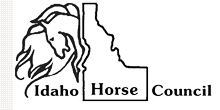 Since 2009, the Bureau of Land Management (BLM) and the University of Idaho 4-H Youth Development have
Since 2009, the Bureau of Land Management (BLM) and the University of Idaho 4-H Youth Development have
partnered to offer an educational opportunity and fundraiser for Idaho 4-H Horse Clubs. 4-H members gentle and train weanlings (ages 4 months to 8 months).
This year, eight 4-H horse clubs picked out weanling mustangs in February, to gentle and train. 4-H youth and their weanlings will compete at the Expo in an In-Hand Trail competition class in the D & B Supply Round Pen, on Saturday 2:45 – 3:30, and Sunday, 9:15 – 10:00.
A demonstration will also be held on Sunday, in the Boot Barn Main Arena, Noon – 1:00. These weanlings will be up for adoption, by silent auction, on Sunday, after 2:00 pm. All proceeds from the adoption over $25 will go back to the individual 4-H clubs to help cover the cost of the training program, and other events.
Through this hugely successful partnership, BLM has adopted over 100 wild mustangs to loving families and homes from across Idaho. The program has raised approximately $10,000 for the 4-H youth and their clubs’ activities.
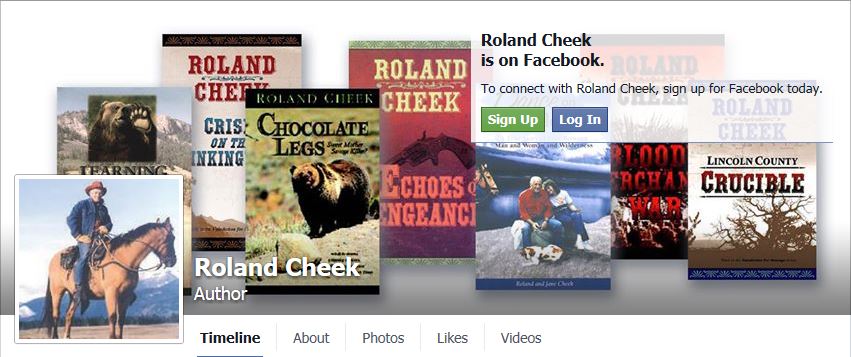
Roland Cheek’s Stories Roland’s Facebook Page
About The Dogged and the Damned:
A tale inspired by the tragic story of a World War 11 combat soldier suffering the effects of what was, at the time, a little studied psychological impairment that, today, we call Post Traumatic Stress Disorder. It’s about a federal veterans psychiatric hospital and its well-meaning staff. And it’s about the soldier’s war at home as he repeatedly escaped confinement to live by his wits in the wilds. The story includes the efforts of a county law enforcement agency sometimes bewildered in its ongoing attempts to capture a fugitive the media sensationalized as a “Wild Man.” It’s a tale of people in a place and at a time when the author came to manhood amid that hospital’s nearby valleys and surrounding forest and mountains.
Get Your Backside in the Saddle
If this keeps up we might need a bigger parking area. New faces, including the two legged and four legged kind, participated in the SBBCHI annual Succor Creek fun ride. In an attempt to stimulate interest in new membership, the fun ride has been opened up to the public. Over 20 riders managed to get their butts in the saddle on an early Sunday morning for a stunning ride through the Owyhee desert.
Amongst the riders were a few members who had recently undergone joint surgery of one kind or another; myself included. I’d had a total knee replacement, Bill Conger had a double total knee replacement and Phil was recovering from shoulder surgery. I figured between the three of us, we had enough artificial parts to build one outstanding bionic Squaw Butte member!
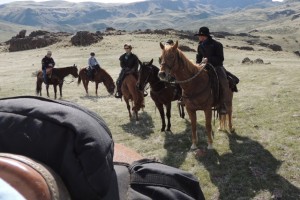 We split the large group into several smaller groups. Smaller groups are often more manageable with less impact on the terrain. The natural varied paces of the horses usually determine the groups traveling dynamic; the Passo’s, Walkers and Rob’s mustang taking the lead. My horse will walk at whatever pace I ask him too and that is normally in the back of the herd. I can better keep an eye on everyone (not that anyone needs keeping an eye on – but it makes me feel better) and snap pictures without interrupting the flow.
We split the large group into several smaller groups. Smaller groups are often more manageable with less impact on the terrain. The natural varied paces of the horses usually determine the groups traveling dynamic; the Passo’s, Walkers and Rob’s mustang taking the lead. My horse will walk at whatever pace I ask him too and that is normally in the back of the herd. I can better keep an eye on everyone (not that anyone needs keeping an eye on – but it makes me feel better) and snap pictures without interrupting the flow.
We left the trailers at approximately 10:30 AM. Light jackets against the morning spring breeze were sufficient for comfort. Several of the members were well on their way as I waited for the last foot to stick a stirrup. I resisted the urge to call out: “Move ‘em up….head ‘em out!”
If it weren’t for Lou Ann – I’d be the most directionally challenged of the bunch. Lou makes me look like an orienteering master! Less than a mile up the road we met Lou Ann coming in from the wrong direction. Well…it wasn’t wrong, exactly, even if it was not the ideal way to enter Succor Creek from Meridian. The important thing was she got there, not how she got there.
A young cowboy, a guest of a member, bailed off his horse, slid into Lou’s driver’s seat and backed her rig off the road. He jumped out, dashed to the back of the trailer, unloaded Lou’s gelding and saddled him before the rest of us could say “Bob’s your uncle.” Turns out 25 year-old Warren works for a Montana outfitter. He all but threw Lou into the saddle and we were off once again. Sort of like an equine pit-stop.
My small group caught up with the Chicks at the gate leading to what I call the “On Top:” an ATV road running north and south above the campground and below the old Indian Cave. Chick and Lorraine lost Sammy, Chick’s beautiful Arabian grey of natural causes earlier in the month. Lorraine was riding an up and coming bay Arab/Quarter cross, Casanova. This was Casanova’s first ride outside the training arena. Casanova was a bit nervous. Not uncommon for a young horse amongst a large group of riders. Chick and Lorraine would switch saddles and do a little Pirelli while the rest of us went on. It is against my nature to leave a member behind, but Chick felt Casanova needed some alone time to get beyond the skittishness magnified by the group.
Dripping sweat and labored lungs brought us to the apex of the first of several steep climbs encountered on the ride. I barely got out the words, “Everyone check your cinches,” when I caught sight of Warren methodically going from rider to rider checking cinches and tightening as needed. This must be what it’s like in the days of Lord’s and Ladies of the manner. “Oh, George…I wish to ride today. Prepare the Black for western discipline.” A meticulously groomed and gleaming black stallion magically appears in the outer courtyard awaiting your riding pleasure. Upon returning home, you toss the reins to the always dutiful George and your horse is miraculously returned to his paddock, freeing you to enjoy mint julips on the terrace with Captain Butler and….
I glanced back often hoping to catch sight of the Chick’s. I reached a vantage point that allowed a glimpse of two tiny riders in the bottom of the canyon. Both riders aboard and clipping along at a good pace. No need to fret any longer.
We followed the trail across the On Top to a gate leading down to the “Hole in the Wall.” Roger dismounts to open the gate. All riders get through ahead of a barrage of ATV’s; one after another filtered through the gate – 14 in all. I thought this might be where we’d lose our young Cowboy. A curvy girl peering from behind goggles did a double take from the back passenger seat of a Yamaha four wheeler. Warren damn near lost his seat as he pushed the front of his felt hat off his forehead. “Well hello! Looks to me like that little gal ‘d be a site happier on the back of this horse than the back o’ that four whiller!” From the sheer velocity of her head whipping around and lingering glance, I believe he might be right. The boy was not lacking in confidence.
We met the larger group on their way back to camp. Janine and Lou Ann turned back with the others. I wanted to show Marina, Rogers’s granddaughter, the Hole in the Wall. Linda, Devon, Mildred, Roger, Marina and Warren and I continued to the Hole in the Wall. In a normal water year, a waterfall pours over the top of the rim rock pooling in the center of the crescent shaped rock formation. It was not a normal water year. The Hole in the Wall was bone dry; as dry as I’d ever seen it.
We rested the horses, snapped a few pictures and mounted for the ride back to camp. I marveled as Mildred popped into the saddle. I remarked to Warren, “I sure hope at 80 some years old I can still get my butt into the saddle like that.” While secretly thinking: Who am I kidding – I wish I could get my butt into the saddle like that today! Mildred is my idol and inspiration. I handed her a can of Beanee Weenee’s. She scrunched up her nose. “You expect me to eat these nasty things?” No Mildred, I’m pretty sure those things would kill you – that can is at least 15 years old. We’ll be lucky if it doesn’t explode before I snap a picture.
Marina put her horse’s feet to work as he danced and fought the bit. This was one 10 year old who wasn’t letting her horse get away with bad habits. The horse jigged to be up with his buddy, Rogers big bay gelding. I stopped asking Marina if she was doing ok when I watched her collect the horse and make him do everything but what he wanted until he stopped misbehaving. Well done, Marina.
We arrived back at camp just as Rob took the last of the burgers and hotdogs off the grill. Some might call it late – I call it perfect timing. As always, the spread of food was impressive.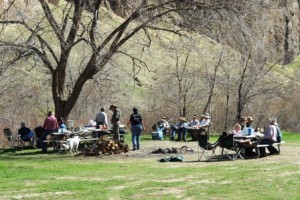
I passed Bill coming back from watering his horse. The conversation went something like this:
Bill: Does your knee pop when you ride?
Me: Not when I ride – but when I walk sometimes. It doesn’t hurt, just feels weird.
Bill: Mine feel like they are loose and shifting around, especially when I’m on the tractor.
Me: Come to think of it, mine do that when I’m on the tractor too. And it did start to do it about the last ½ mile of our ride today.
Bill: I don’t like it. It bugs me.
Me: Do you think it’s normal? *Please tell me you think it’s normal.*
Bill: God, I hope so.
The haul back home over one of the roughest, tire popping, gravel roads in Oregon affords ample time to contemplate on the success of another Backcountry Horseman outing. We met some wonderful prospective new members we hope to see more of in the future. We reflect on the sadness of our four legged partners we have lost and look forward with hope in the new mounts that will fill the empty hoof prints they left behind. We glean inspiration from Mildred’s agile horsemanship. Determination from the likes of Phil and Bill’s tenacity; Hope in the future from Marina’s youth.
No matter the age of the rider or the number of plastic parts they might boast, you just can’t keep a good Backcountry Horseman’s butt out of the saddle.
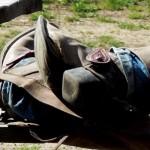 Click for full set of Pictures on Picasa
Click for full set of Pictures on Picasa
Spring has sprung and green pasture is coming on like gangbusters in most parts of the country. For most of us, this is good news because green grass relieves some pressure of searching for quality hay at a reasonable price. Of course, with the rising cost of fertilizer, it may be hard to decide which is the lesser of two evils: high-priced hay or high-priced fertilizer. However, if you have pasture and intend to utilize it for horses, there are some things to consider.
Take it slow
Keep in mind that going from dry hay and grain to lush, green pasture is a drastic change in diet and may increase the risk of founder or colic. Horses that are in the pasture full time will gradually become accustomed to the emerging green grass as it comes up. But horses that haven’t had green grass should only be allowed to graze for an hour or two at first, then gradually increase grazing time by an hour every couple days until the horses are out full time. It is also a good idea for horses to have eaten dry hay prior to turnout so they are not overly hungry. Individual horses will have different tolerance levels to the diet change and the nutritional profile of the grass, so a slower introduction is usually better.
Meet horse nutrient requirements
Spring pasture often looks beautiful and nutritious but can be very high in water and low in fiber content. In this stage of maturity, pasture may not meet a horse’s minimum requirement for dry matter intake and it may be necessary to provide 10 to 15 lbs. of dry hay per day until the pasture matures. Even when the pasture is sufficient to maintain horses in good body condition with no supplemental grain, there will still be nutrient deficiencies. Providing a forage balancer product such as Purina® Enrich Plus™ will supply a balance of protein, vitamins and minerals to complement pasture. This product is formulated to meet nutrient requirements of mature horses with 1 to 2 lbs. per day, whereas most feeds are formulated to be fed at a minimum of 3.5 to 4 lbs. per day
Ensure adequate pasture
Pasture simulates a natural environment for horses and is considered beneficial to horses from a nutritional standpoint and from a mental health perspective as well. You may have enough pasture to serve both functions but, in many cases, pasture space is simply a place to roam around and nibble for a few hours a day. To determine if there is enough pasture for grass to be a significant source of nutrition, you have to consider the available acreage, type of forage and the number of horses or stocking rate.
The very best pastures may support one horse per acre, but average conditions may require closer to 2 to 3 acres to sustain one horse grazing full time. The effective stocking rate will depend on the type of grass, fertilization and rain fall. For shorter varieties of grasses, such as Kentucky bluegrass, pasture must grow 3 to 4 inches tall to provide adequate forage for horses. Taller grasses, including Coastal bermudagrass, should sustain a height of 6 to 8 inches. Stocking rates may be improved if there is an option to rotate pastures. Grazing tall forage varieties down to 3 to 4 inches and shorter varieties to 2 inches in height, then rotating to another pasture for four weeks can help maximize grazing potential of available acreage. Rotating pastures is also a good way to reduce the risk of internal parasite infestation. A good rule of thumb is that if you can see manure piles in your pasture and if horses are grazing close to those manure piles, your pasture is overgrazed and horses should be removed to let it recover.
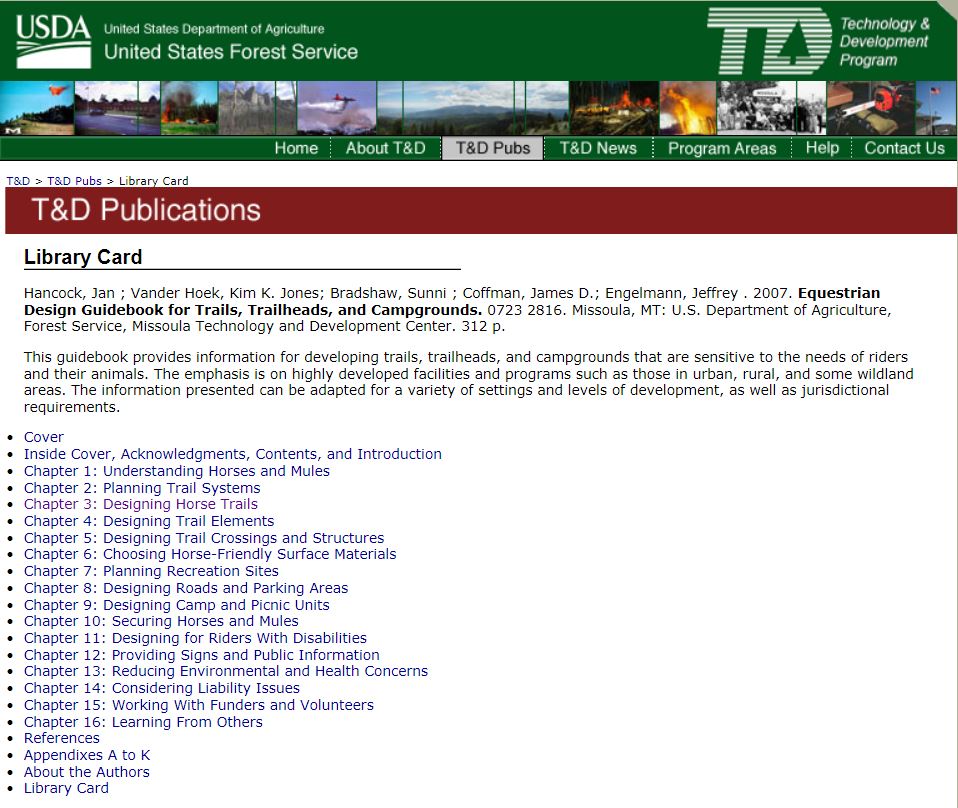
Click to read More Information
Here are some insights into what Mtn Bikers prefer – you may wish to know this, in order to explain how their outdoor expectations differ from what horse riders prefer, and neither wants to interfere with the other’s enjoyment of the outdoors.
February 20, 2015
The next generations of conservationists want to hike and explore wild landscapes like the Boulder-White Clouds, just as the first travelers who discovered them. The only difference is we use fancier equipment.
My generation, the “millennials,” hikes, backpacks and floats the wilderness just like our forefathers have. But advances in materials and technology now allow us to go farther and lighter than ever before. You can now pack two weeks of food and gear into a 65-liter pack that weighs only 30 pounds. I know this because for the last six years I worked as a wilderness ranger in the Frank Church-River of No Return Wilderness and spent my summers backpacking while clearing trail with cross-cut saws and axes.
I consider myself a public servant, care taking wilderness for the benefit of all Americans. I love wild places just as much as anyone else, but that doesn’t mean I’ve sold off my mountain bikes because they’re nonconforming uses in wilderness.
The traditional conservation demographic has shifted. Instead of just backpackers, hunters, anglers, boaters and climbers speaking up for healthy landscapes, mountain bikers are voicing their concerns about access to and protection of America’s wild places. Adrenalin-fueled activities piloted by younger activists should now have a seat at the table. So what does that look like for the future of conservation and our beloved Boulder-White Clouds?
It means a community approach to management on a trail-by-trail basis. It means reaching across the table to negotiate for the benefit of the landscape – not to benefit a particular party or interest. It means being flexible, patient and professional.
The Wood River Bike Coalition working with the International Mountain Bike Association (IMBA), The Wilderness Society, Idaho Conservation League, Outdoor Alliance, along with numerous other organizations, 46 businesses, and local county and state officials all support a national monument because of its ability to reflect Idahoans’ broad interests. A monument delivers the conservation objectives, while also preserving prime recreational opportunities.
The Obama administration, like them or not, has proved it wants to hear and consider local sentiment before moving forward, and any action will be based off decades of local involvement. Well, the BWC have been a conservation topic for the last 40 years; Rep. Mike Simpson’s CIEDRA bill was introduced over a decade ago, and reintroduced several times since.
And while the latest iteration of CIEDRA is a noble attempt, it has yet to result in a bill that represents the full interests of Idahoans. Now more than ever, there are additional recreation pressures that need to be considered. National monument status is sensical, does not need legislative approval and has room to negotiate travel planning for all parties, especially mountain bikers.
The collaborative group has worked together to find a balance – ensuring sensitive areas get heightened protection to safeguard critical habitat, yet allowing mountain bikes to access some of the most distinctive backcountry rides in the country. This community-based approach is the future of conservation. A national monument is the Idaho solution.
The millennial generation has just as much, I would wager more, skin in the game to decide the future of the Boulder-White Clouds as any of the old guard. We’re the ones who will end up managing it, maintaining it and ultimately paying for it. And yes, it’s true, management comes at a price, but to us the price of protection in perpetuity is worth it. #MonumentsMatter #GetLoudForTheClouds
Eric Melson, of Boise, served as the Frank Church program director for the Selway-Bitterroot Frank Church Foundation from 2010 to 2015. He is a graduate of Colorado State University.
~~ ~~ ~~ ~~
Our next National Monument: Idaho’s Boulder-White Clouds (Feb 27, 2015)
By former Rep. Larry LaRocco (D-Ida.)
Last week was historic with three more national monument designations: Pullman in Chicago, Honouliuli in Hawaii and Browns Canyon in Colorado. President Obama has now designated 16 national monuments using the executive authority of the Antiquities Act. The Antiquities Act gives the President authority to permanently protect places of natural, cultural and historic value and, as an Idahoan who loves the outdoors, I support the Boulder-White Clouds as national monument number 17.
The congressional efforts to save Central Idaho’s Boulder-White Clouds, the largest unprotected roadless area in the U.S. outside of Alaska, are dangerously stalled. And as a former staff member of Sen. Frank Church (D-Ida.) and former member of Congress myself, I fear further waiting won’t yield a favorable outcome. Church instilled in all of his staff a great passion for untrammeled public lands, a legacy that remains today. In his four terms from 1957 to 1981 representing Idaho in the U.S. Senate, Church was an influential leader on many fronts, but is perhaps best known for preserving much of Idaho’s spectacular wild lands and waters.
He was an integral player in the passage of the landmark Wilderness Act in 1964, one of America’s greatest conservation achievements. In Idaho, he led successful efforts to protect some of the state’s most treasured landscapes– Gospel Hump, the Hells Canyon National Recreation Area, the Sawtooth Wilderness and National Recreation Area, and later the River of No Return Wilderness, re-named the Frank Church-River of No Return Wilderness in his honor. And he and his wife Bethine backed protection of the Boulder-White Clouds region.
The Boulder-White Clouds is considered one of the last best wild places in North America and deserves permanent protection. Fishing and hunting opportunities abound. There is a stunning array of animal species from chukar partridge to wolverine; rugged, alpine terrain for hikes and climbers alike. With the addition of the East Fork of the Salmon that provides abundant clean water, the area is a literal heaven for sportsmen and outdoor recreation enthusiasts.
Idahoans are grateful to Rep. Mike Simpson (R) for his tireless efforts on behalf of the Boulder-White Clouds for the past 11 years. Unfortunately, his bid to gain Wilderness status has repeatedly failed to gain traction in Congress. The gridlock shows no sign of breaking even now after he’s made several concessions to try to win support. This is no fault of the Congressman’s but rather another indicator of protracted congressional malaise.
After waiting for decades, I recently joined 43 of my former colleagues from Church’s office and asked Obama to protect Church’s legacy by proclaiming a Boulder-White Clouds National Monument. Church’s work isn’t over and it’s time Obama used his authority to protect one of the last “crowning jewels” of Idaho as a national monument.
LaRocco served in the House from 1991 to 1995 and was the author of the Snake River Birds of Prey National Conservation Area, PL 103-64.
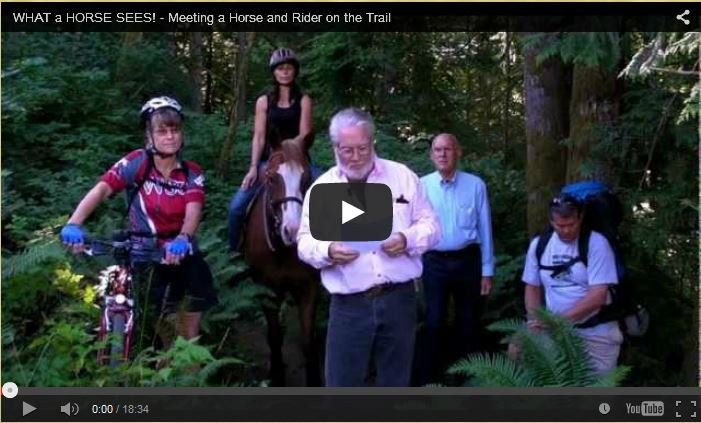 From Everett Lewis, a Washington Backcountry Horseman, comes this wonderful video that is just as applicable to those of us riding the horses as the bikers and hikers that also want to learn how to be safe around equines. Everett has distilled the myriad of “what should happen” items into three easy to remember steps that we can share with the growing number of people on the trail. The life you save my be your own.
From Everett Lewis, a Washington Backcountry Horseman, comes this wonderful video that is just as applicable to those of us riding the horses as the bikers and hikers that also want to learn how to be safe around equines. Everett has distilled the myriad of “what should happen” items into three easy to remember steps that we can share with the growing number of people on the trail. The life you save my be your own.
STOP – Horses spook easily, and may perceive movement, especially quiet movement, as a predator — and bolt.
TALK – Human speech is reassuring and comforting for the horse. Continue to talk until the horse has passed.
MOVE DOWN – to the low side of the trail. If horse gets spooked, you don’t want it going off the steep side or horse and rider can be injured. Enjoy the video that Everett produced to help educate hikers and bikers, as well as horsemen on how to share the trails together.

